Illustrated Guide to Seth Thomas Pocket Watch Hands
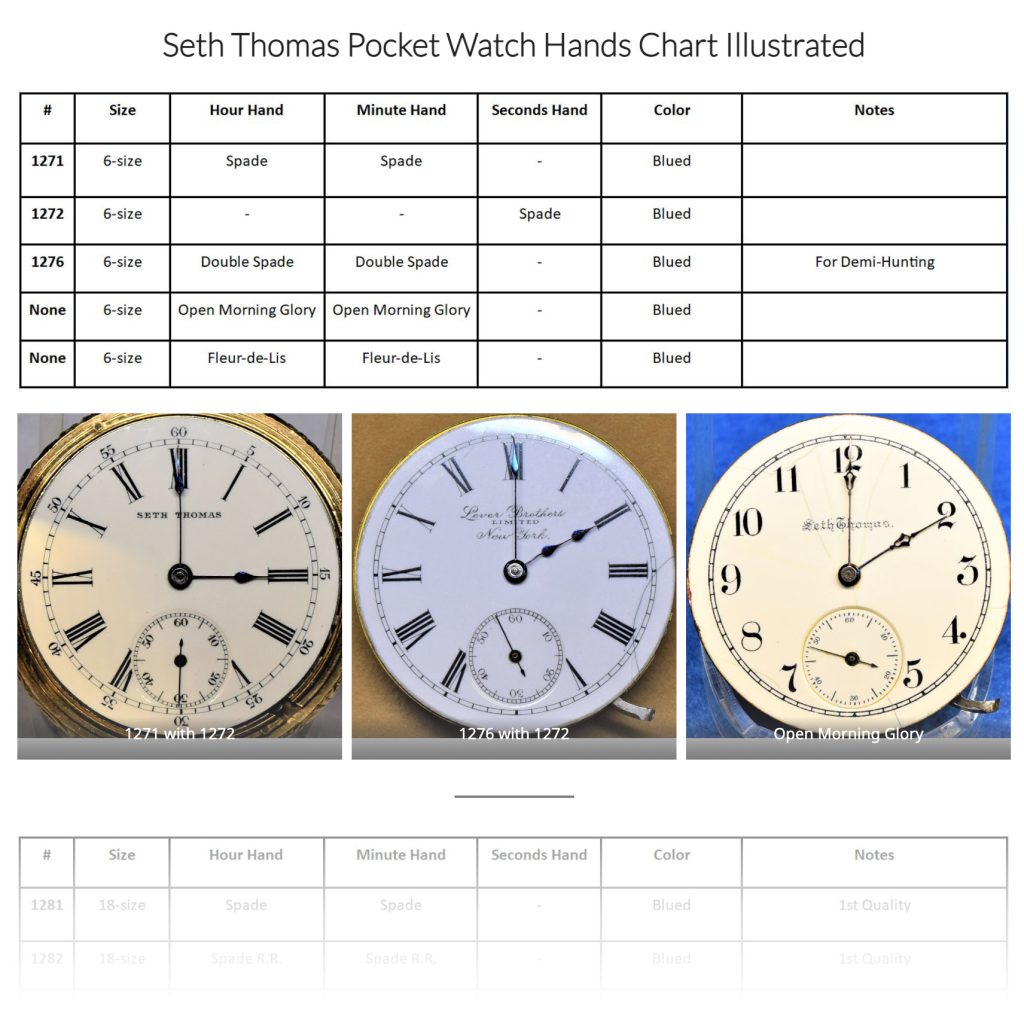
Seth Thomas pocket watch hands present clear, clean, highly functional and attractive lines that compliment the simple but elegant and practical dials with which Seth Thomas pocket watch movements were fitted.
In order to fully and accurately document and communicate a detailed description of the pocket watches that we encounter; whether as a watchmaker, an historian or in our collections, we need to know the standard language and part numbers used by the manufacturers of our watches. The purpose of this article is to provide a clear, complete, and easy-to-use chart listing and describing original Seth Thomas pocket watch hands by their part numbers so that we can include that information clearly in our personal or professional records as we care for these venerable historic artifacts.
This information was extracted from the 1904 Illustrated Price List, No 648, Seth Thomas Watch Movements, Trade Price List, October 15, 1904 shown on the right-hand side of this page. In presenting this information on the new chart the use of abbreviations and hashmarks was avoided in order to provide greater clarity, and to reduce errors in interpreting the information. Please feel free to copy, print, and use the new chart in your daily practice.
The importance of making historical background information freely available to all who have interest in the roots of the American clock and watch industry cannot be overstated. Information that is not freely shared not only confounds the research of present day horologists; but will likely be forever lost to the future generations of horologists.
The Pocket Watch Database, serving as a collective repository for the studies and research of many, is playing the greatest role in collecting, organizing, consolidating, and freely disseminating invaluable information to the horological community and the public at large.
In order to place the benefit of the new Seth Thomas Pocket Watch Hands Chart into the context of daily practice this article will include information relevant to the removal and measurement of pocket watch hands and the components to which they are fitted.
A full-page image of the new chart is provided on the final page of this article so that it can be printed out for use as a reference material.
Determining Hand Sizes
To explore the underlying structures and to demonstrate the methods of determining hand size we will first need to remove the hands from a pocket watch.
Hand Removal
A good set of bench keys will serve you well in many facets of pocket watch preservation. It protects the hands to advance the minute hand to the same position as the hour hand prior to removing them. In the example below the hands were already fairly close together; so this was not necessary.
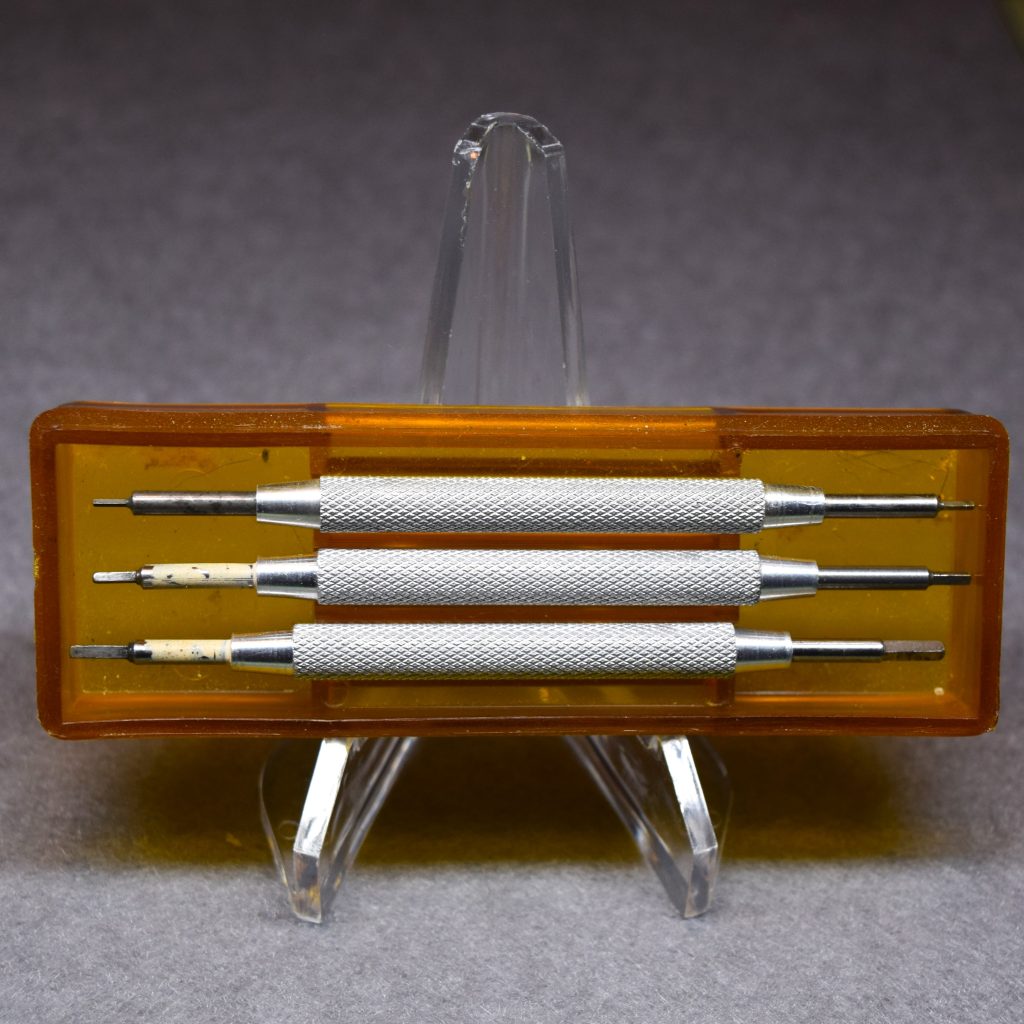
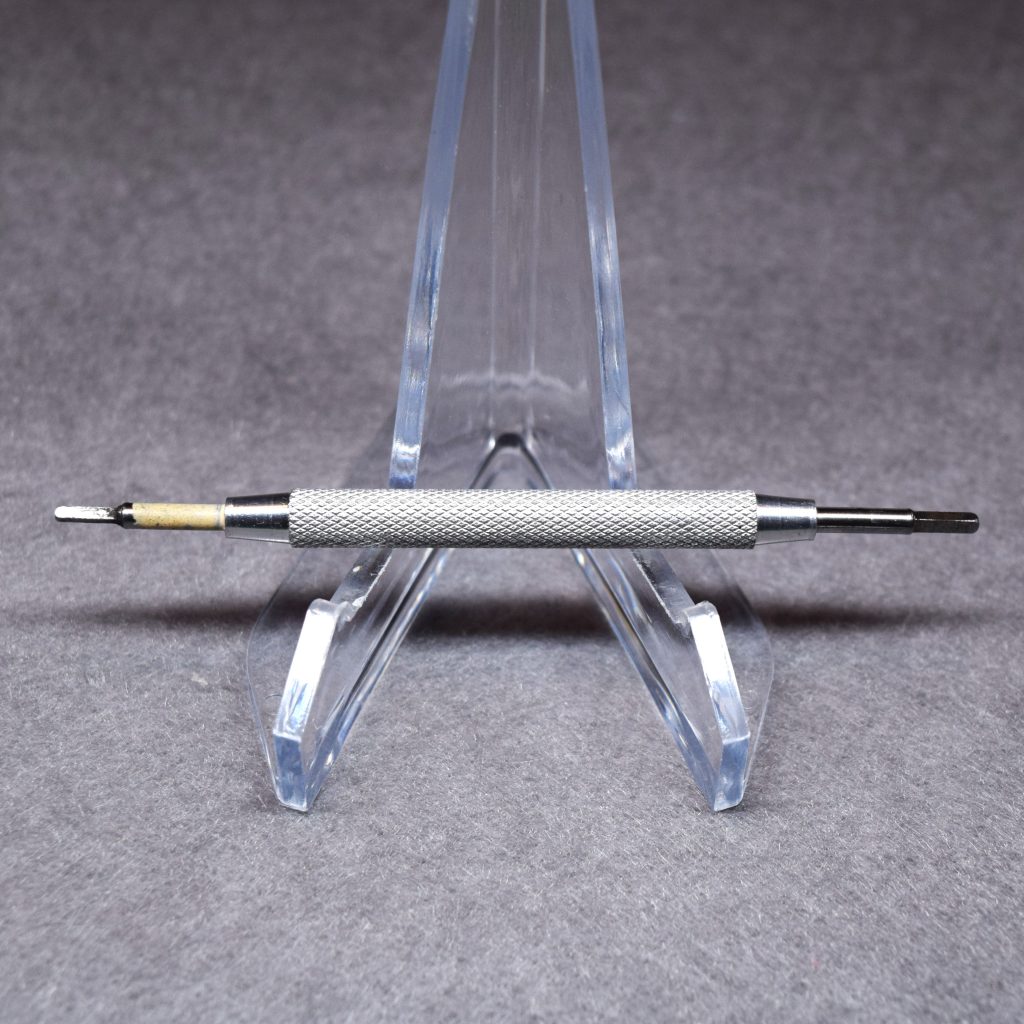
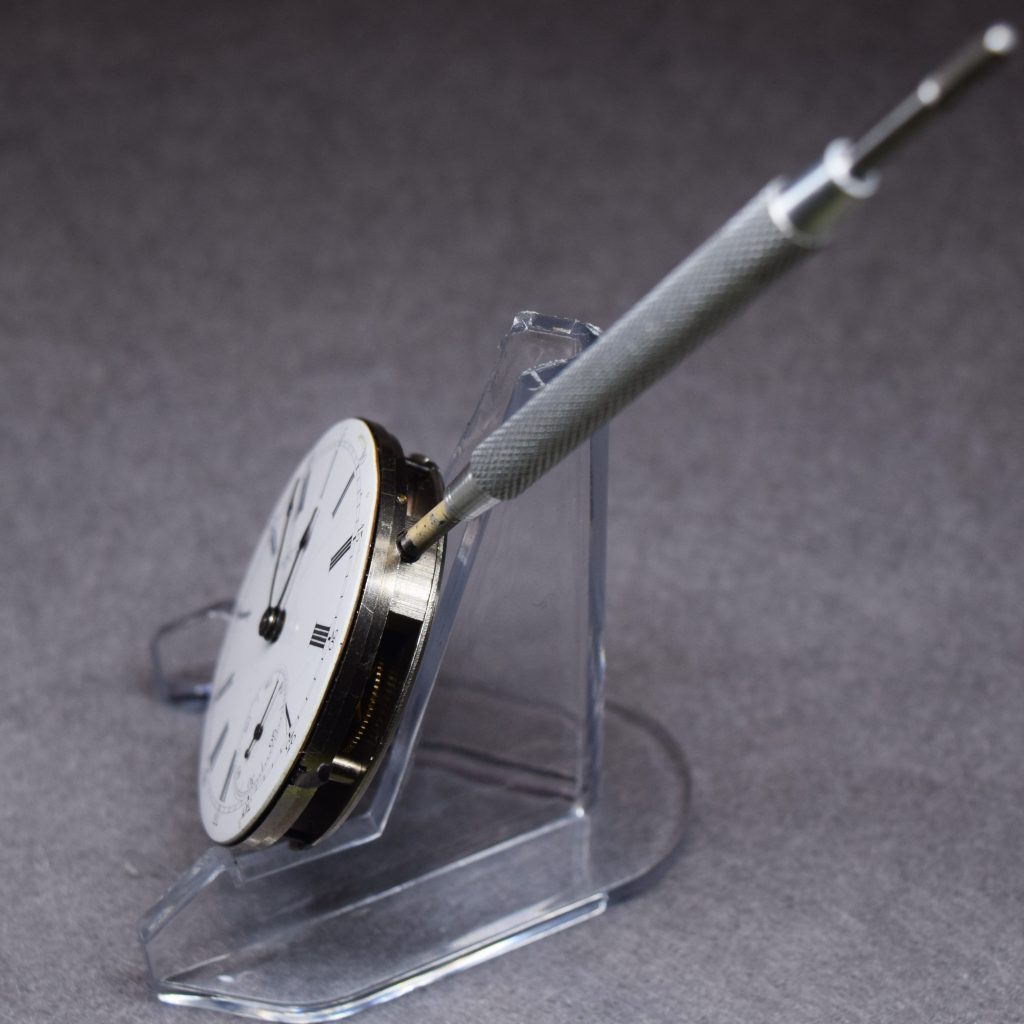
Hand Puller
This style of hand puller is safe and effective in removal of hands from the pocket watch movement. You can see in the photos below that the centers of the hour hand and minute hand are stacked closely above one another. The hand puller will hold the hands together as it pulls them from their friction fit to the movement components below the dial.
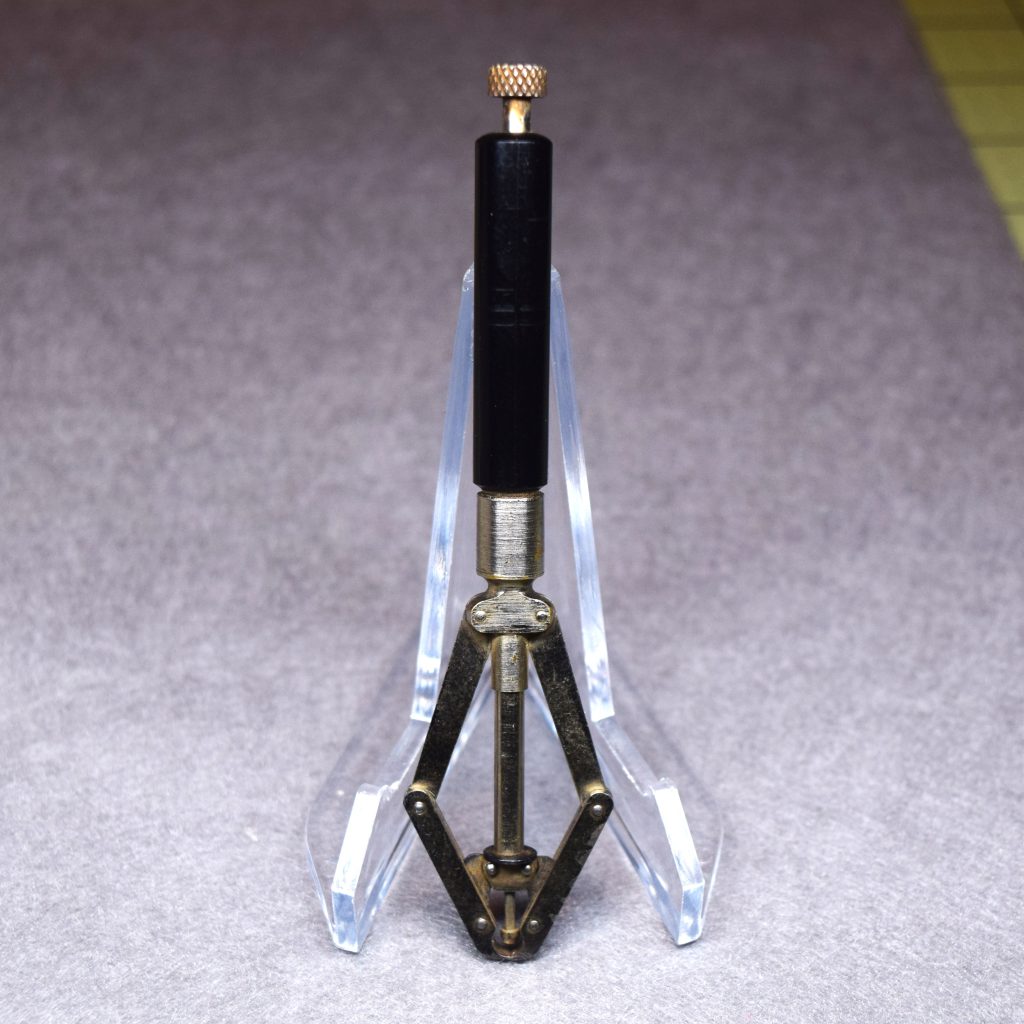

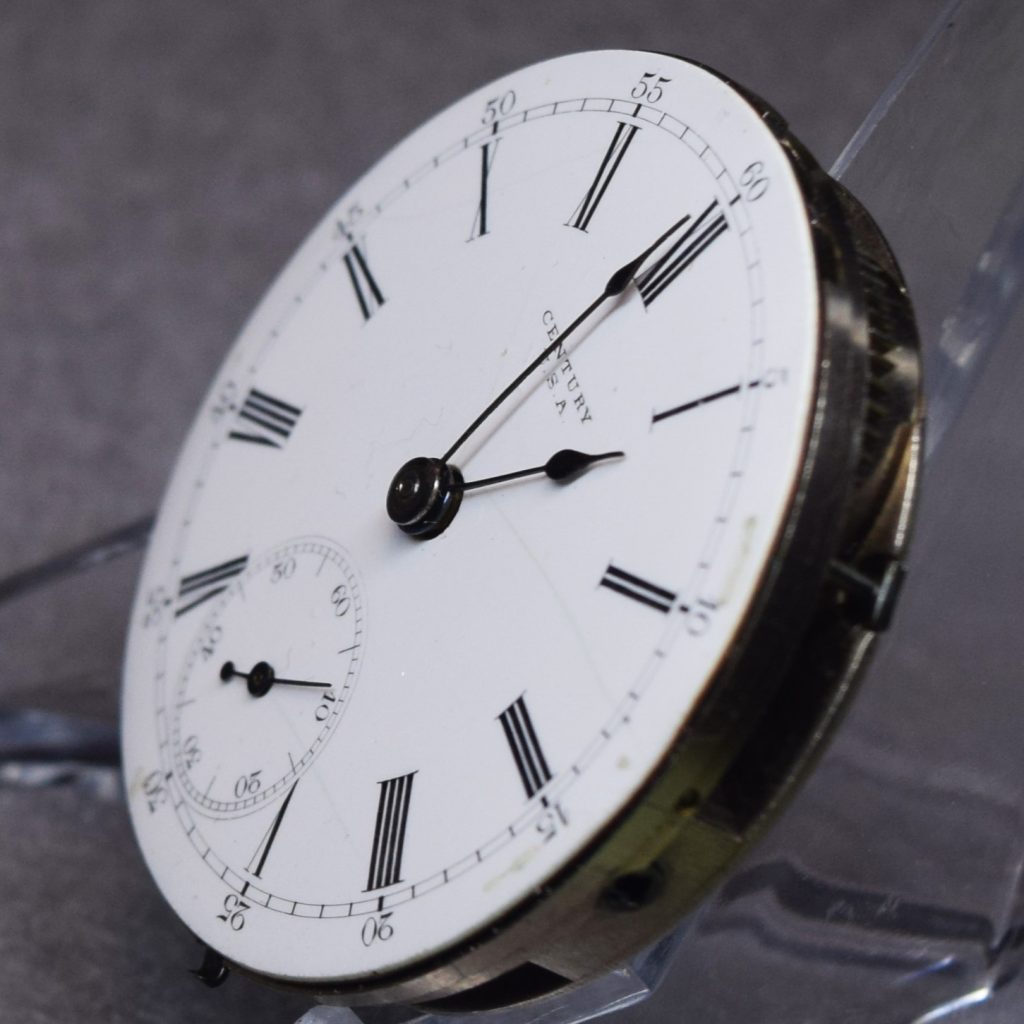

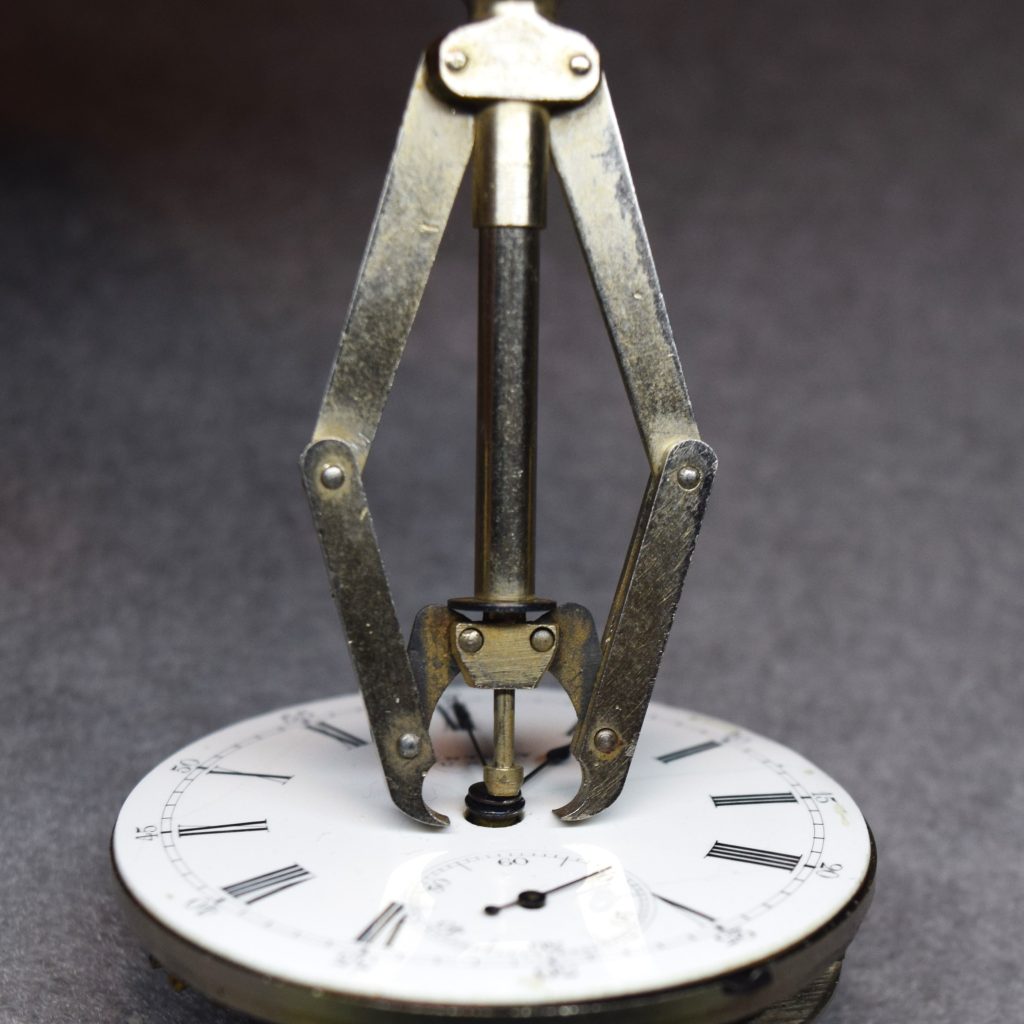




Dial Removal
In order to examine the hour wheel and cannon pinion the dial will need to be removed. This is accomplished by slightly retracting the dial foot screws found on the outer perimeter of the pillar plate. On Seth Thomas pocket watches there are usually three; but sometimes only two, dial foot screws. On this 18-size Seth Thomas Model 13 Hunting oriented pocket watch movement one dial foot screw is located next to the winding port, another is adjacent to the escape wheel, and the third is located adjacent to the balance wheel.

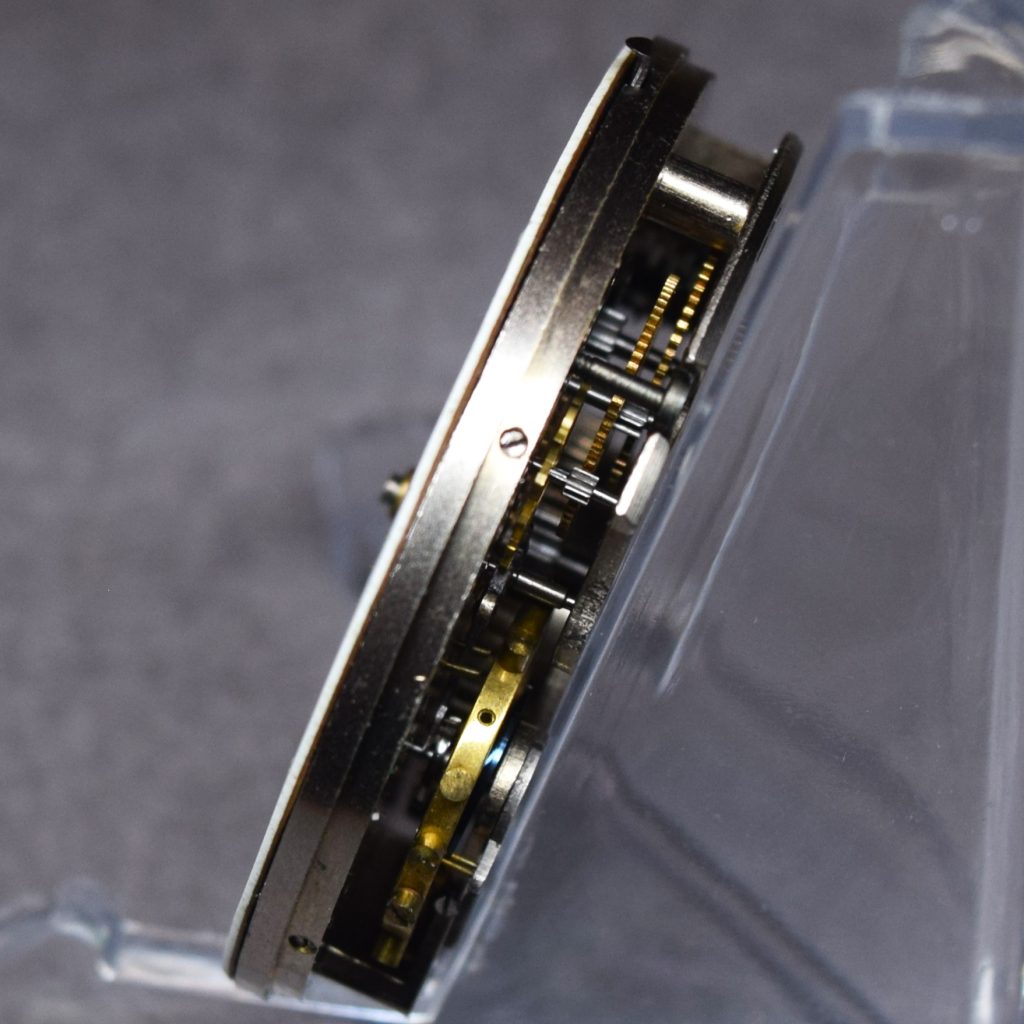
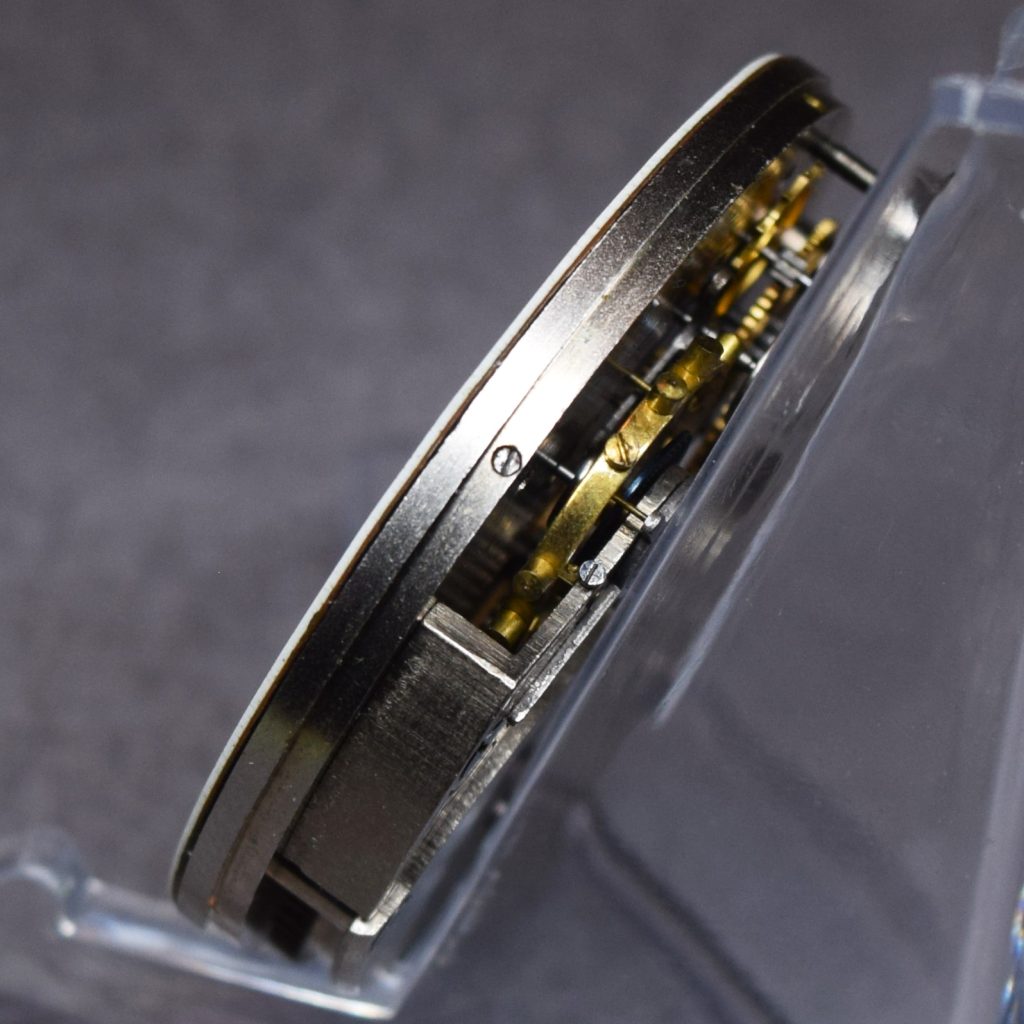
Underlying Components
In the photographs below you can see the brass hour wheel to which the hour hand maintains a friction fit, and the cannon pinion to which the minute hand maintains its friction fit. You can see that the hour wheel is driven by the teeth on the pinion of the minute wheel.
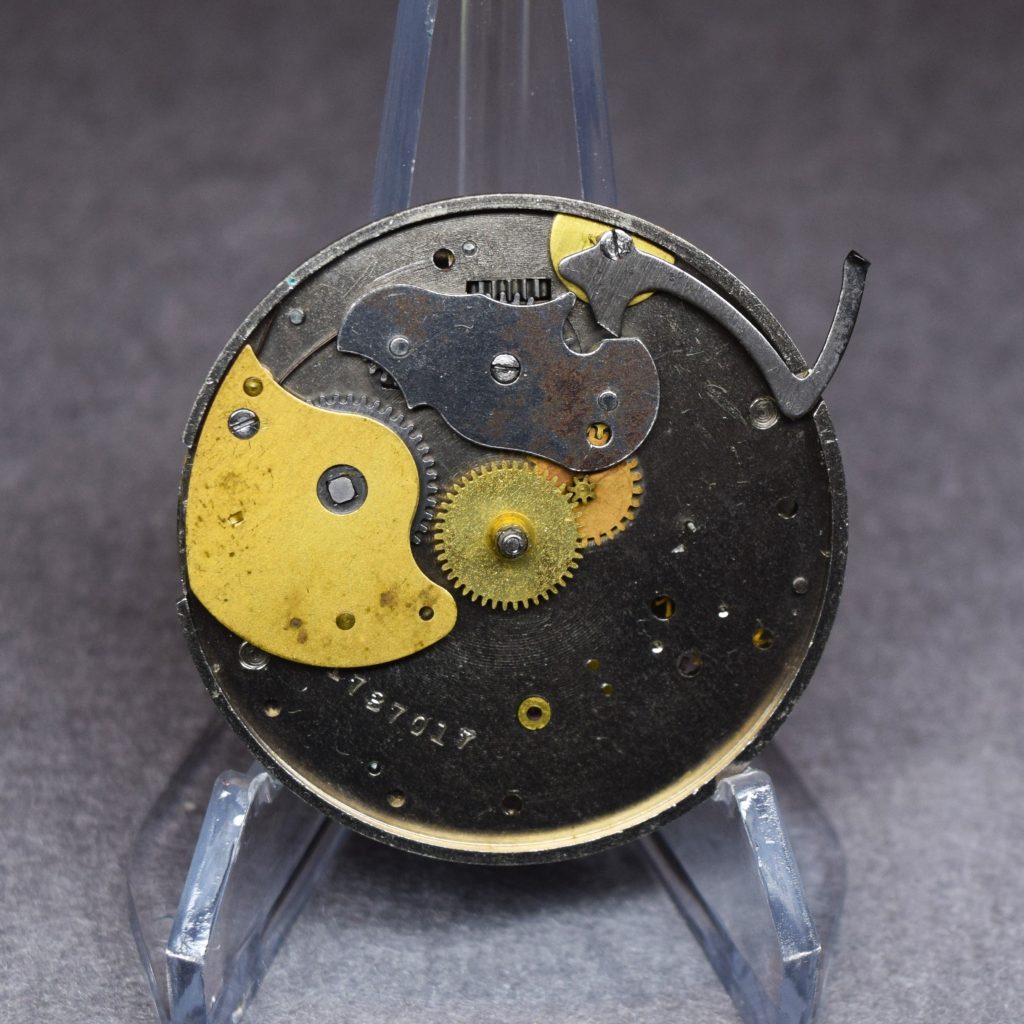
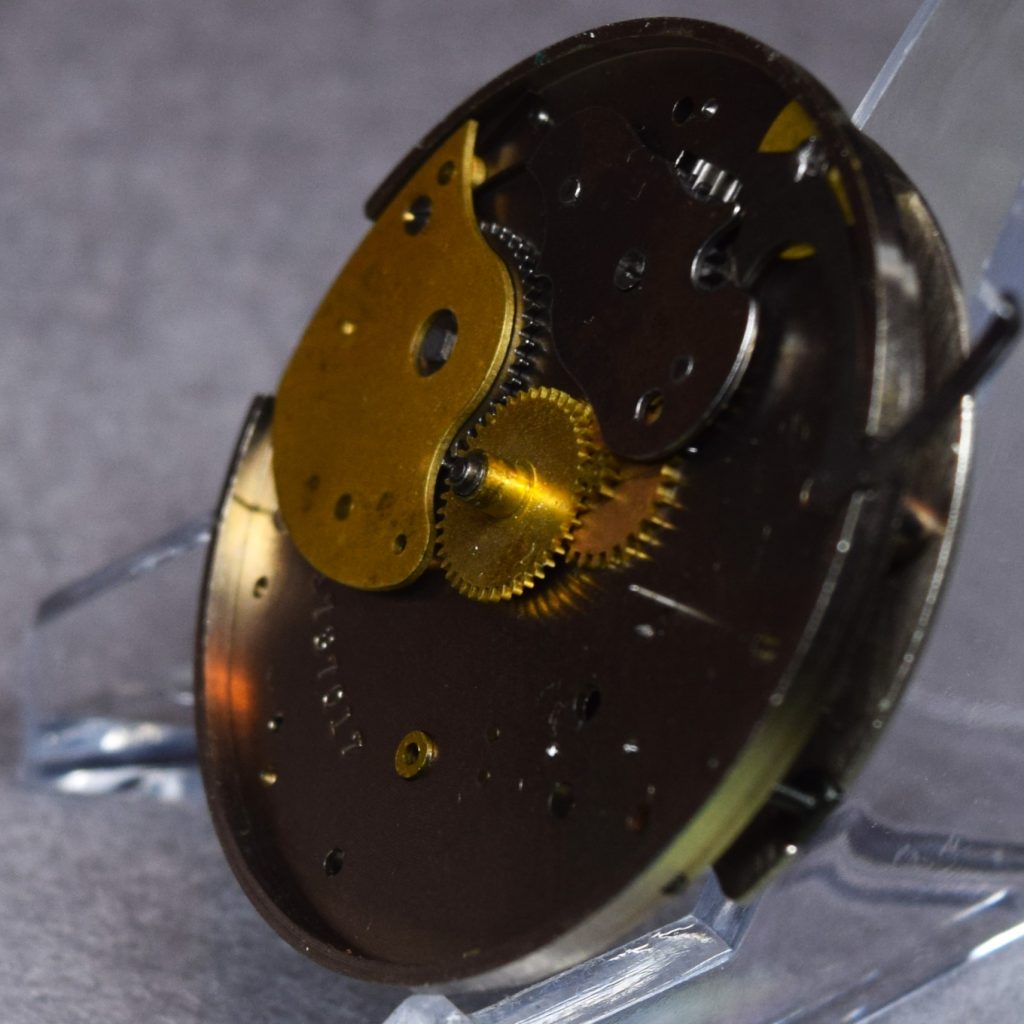

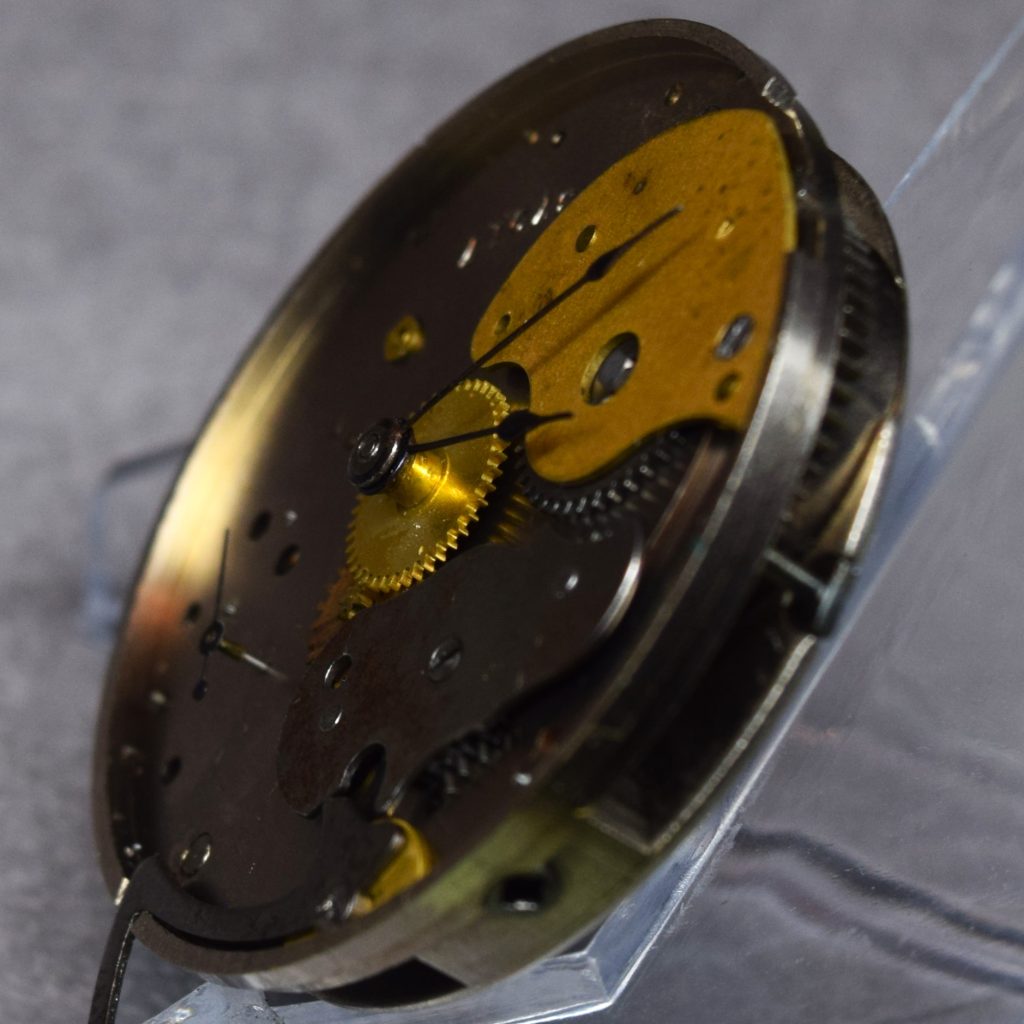
The brass hour wheel is shown below, removed from the pillar plate to expose the steel cannon pinion, the tip of which maintains a friction fit with the minute hand to control its movement. The cannon pinion rides upon the pinion of the center wheel extending from its position between the pillar plate and the top plate. The cannon pinion is driven by the teeth on the rim of the minute wheel. The teeth on the pinion of the minute wheel drive the hour wheel.
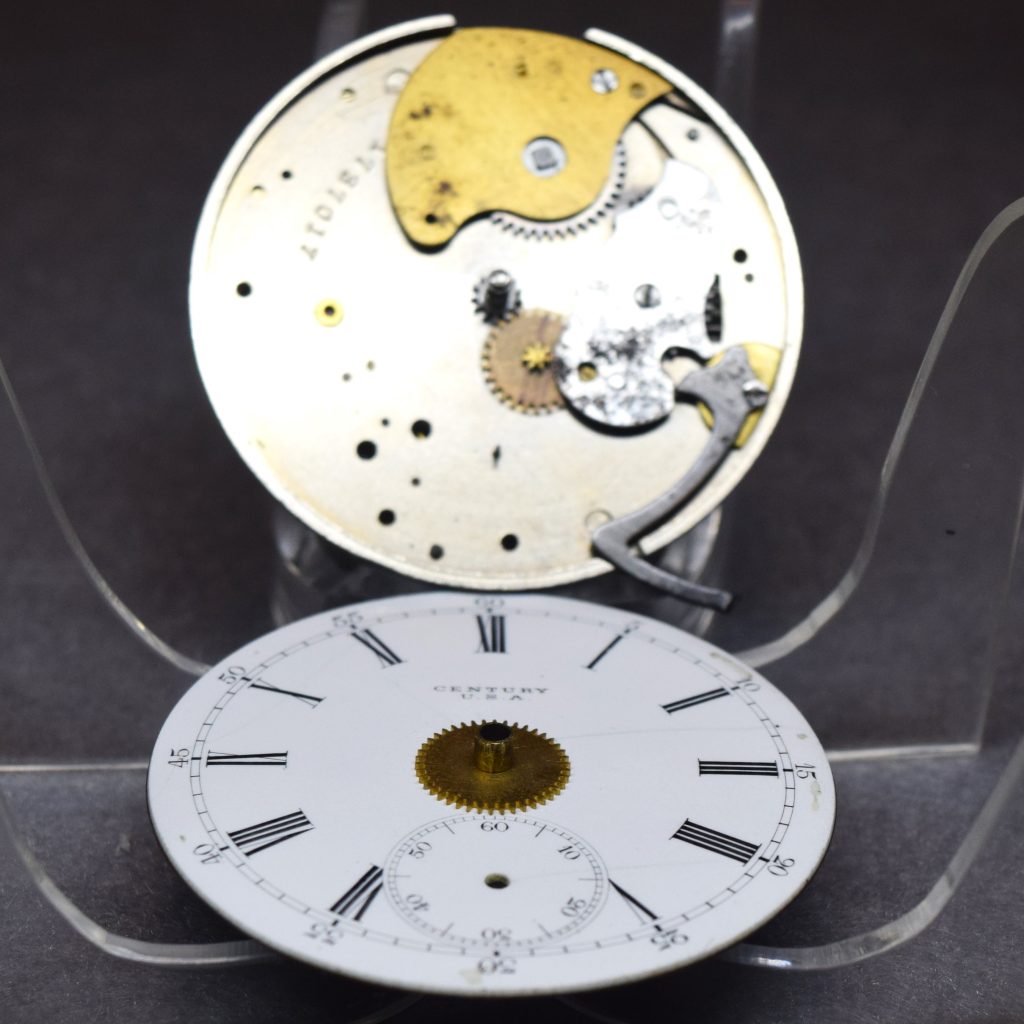
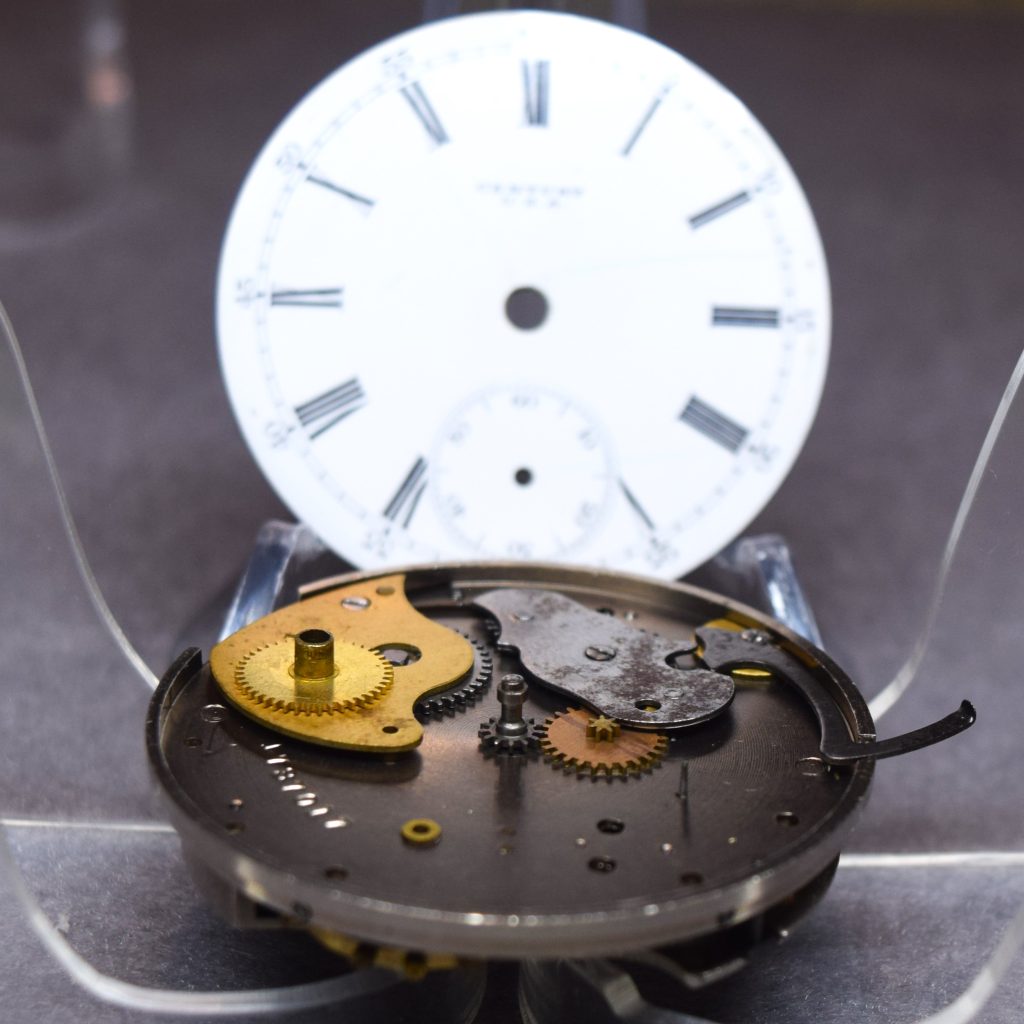
Minute Hand and Hour Hand
The minute hand extends from the tip of the cannon pinion and reaches almost to the minute track. Its hub is flat on the bottom side and has a beveled and polished steel finish on top. The minute hand extends from the tip of the cannon pinion, covering the hub of the hour hand and is then curved to reach down over the hour hand, and extends almost to the minute track. The bottom side of the hour hand has a pipe section that slides tightly over the exterior portion of the hour wheel within which the cannon pinion turns independently to control the movement of the minute hand.
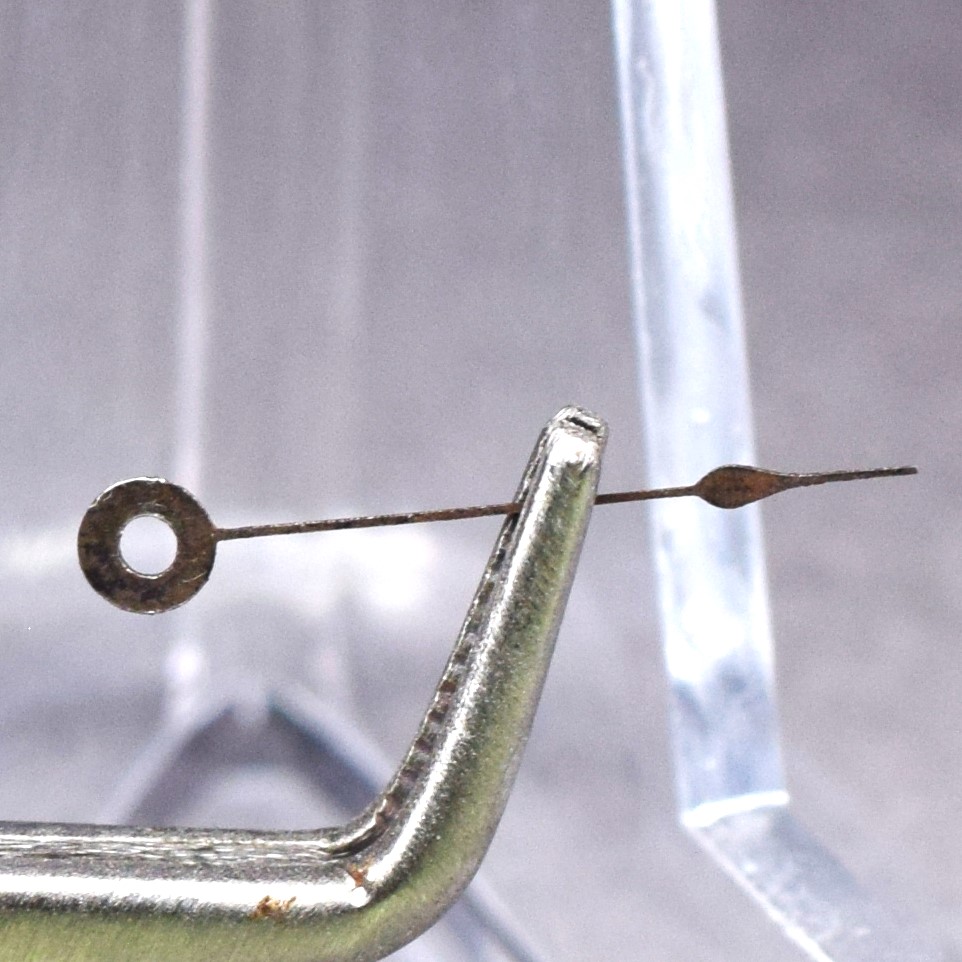
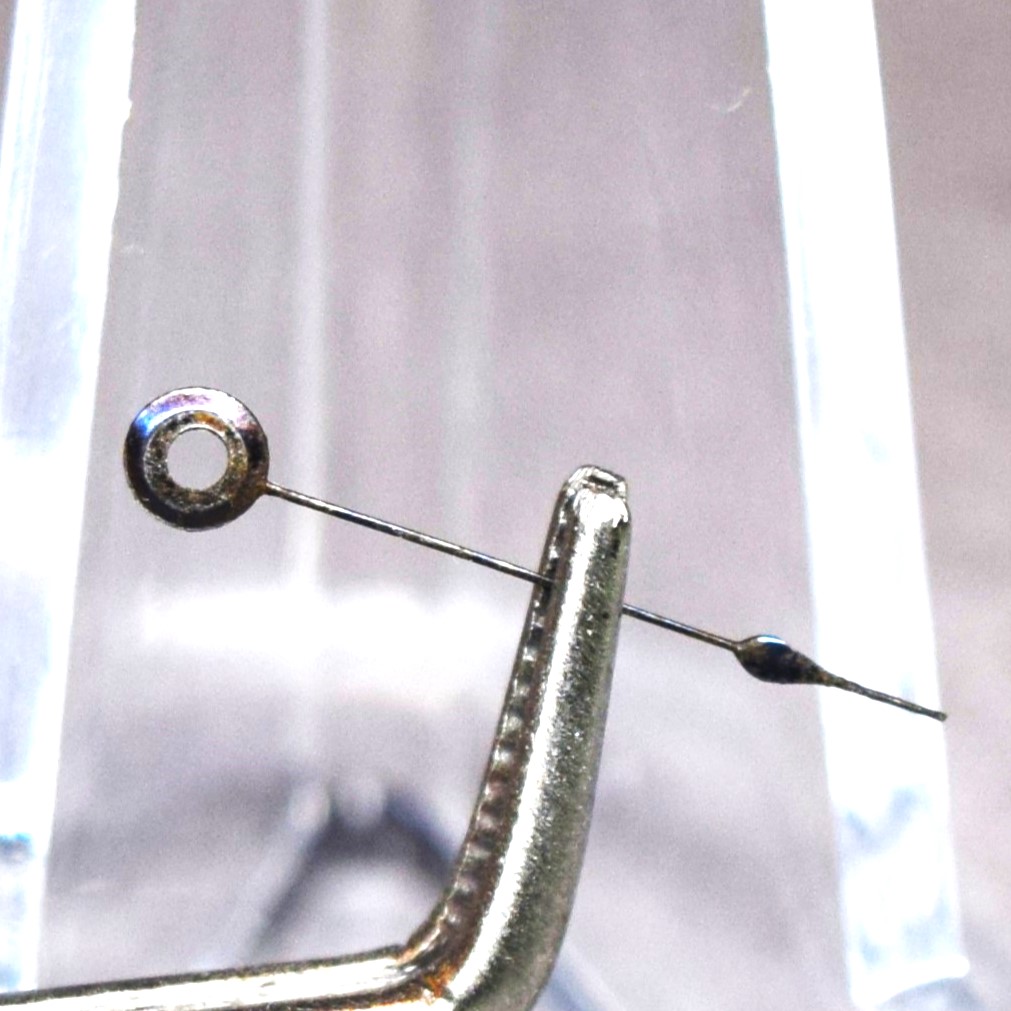
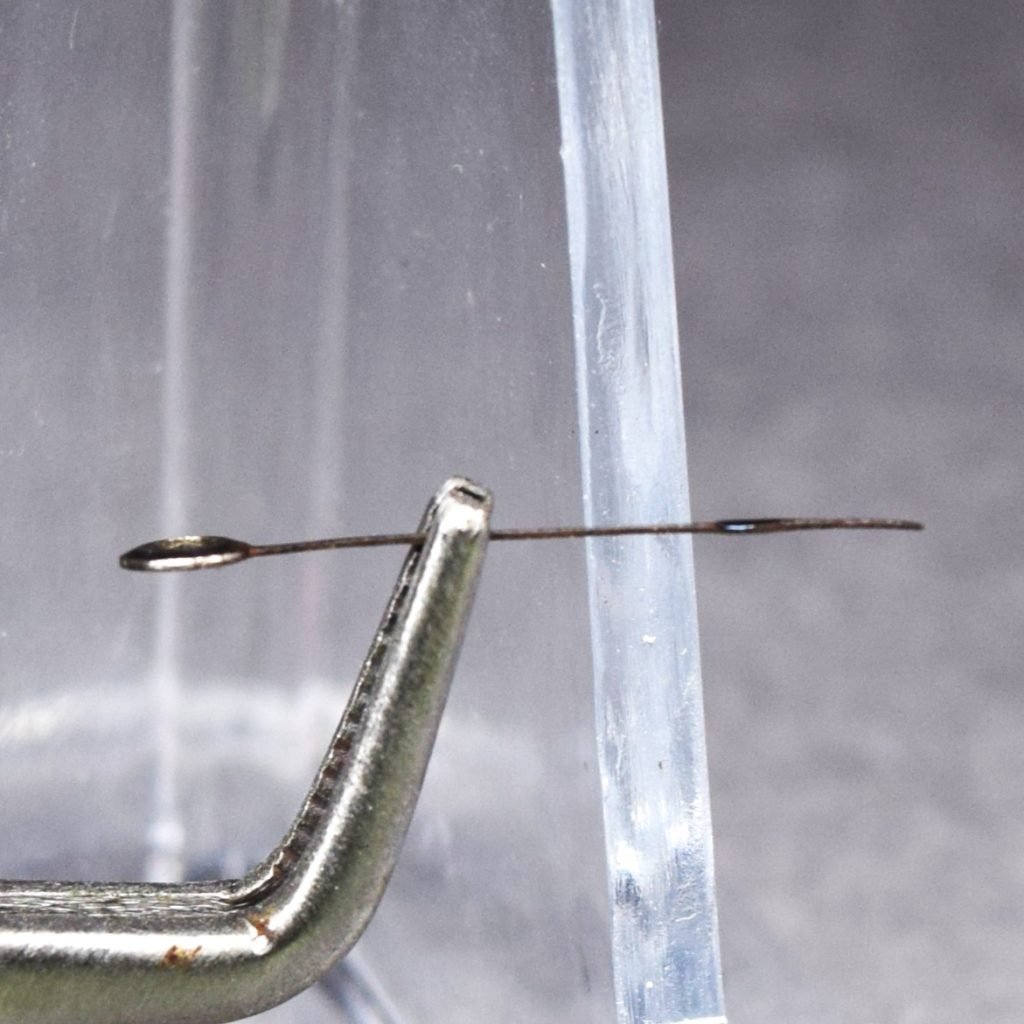
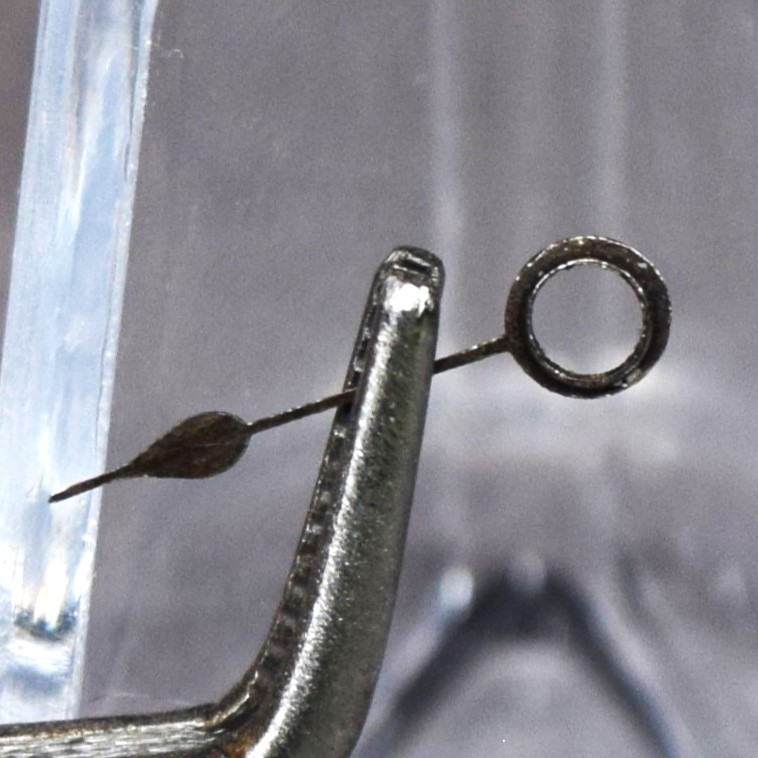
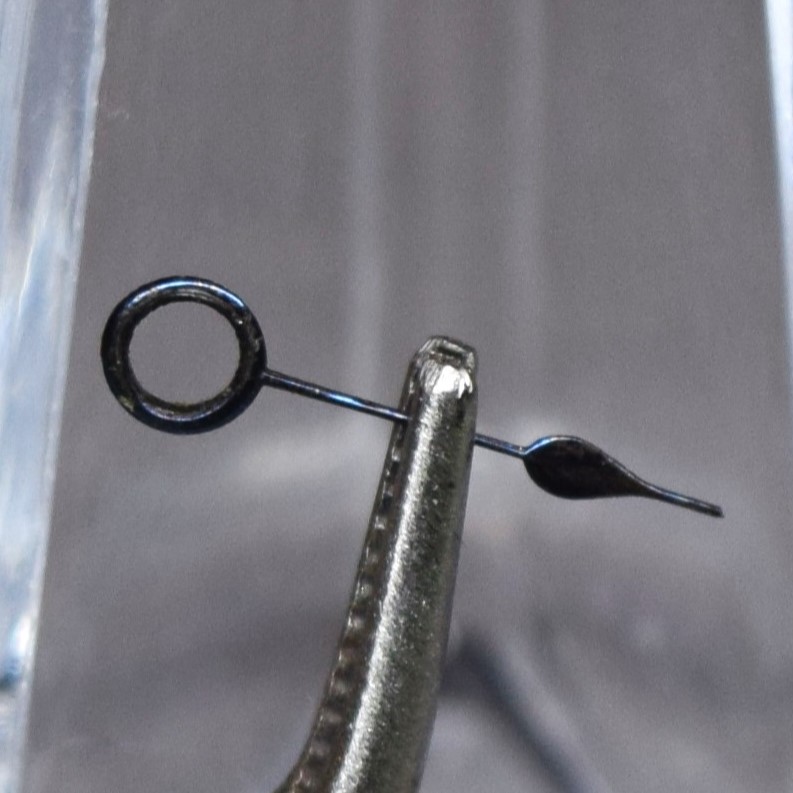

Methods of Measuring Hands
The measurement process shown on this page exposes the difficulty in declaring that a certain size pocket watch’s hands will always be found to have certain exact dimensions. The limitations and variations or inaccuracies in measuring devices, and the variations in the outside diameter of the hour wheel or cannon pinion can limit our ability to predict accurately whether a certain measurement that we have of the inside diameter of the mounting hole in a hand will match the actual dimensions of the hour wheel or cannon pinion to which we would like to fit it. The outside diameter of the tip of the cannon pinion shown below is read to be 1.39 mm on the digital caliper. The outside diameter of the hour wheel is read to be 2.50 mm.
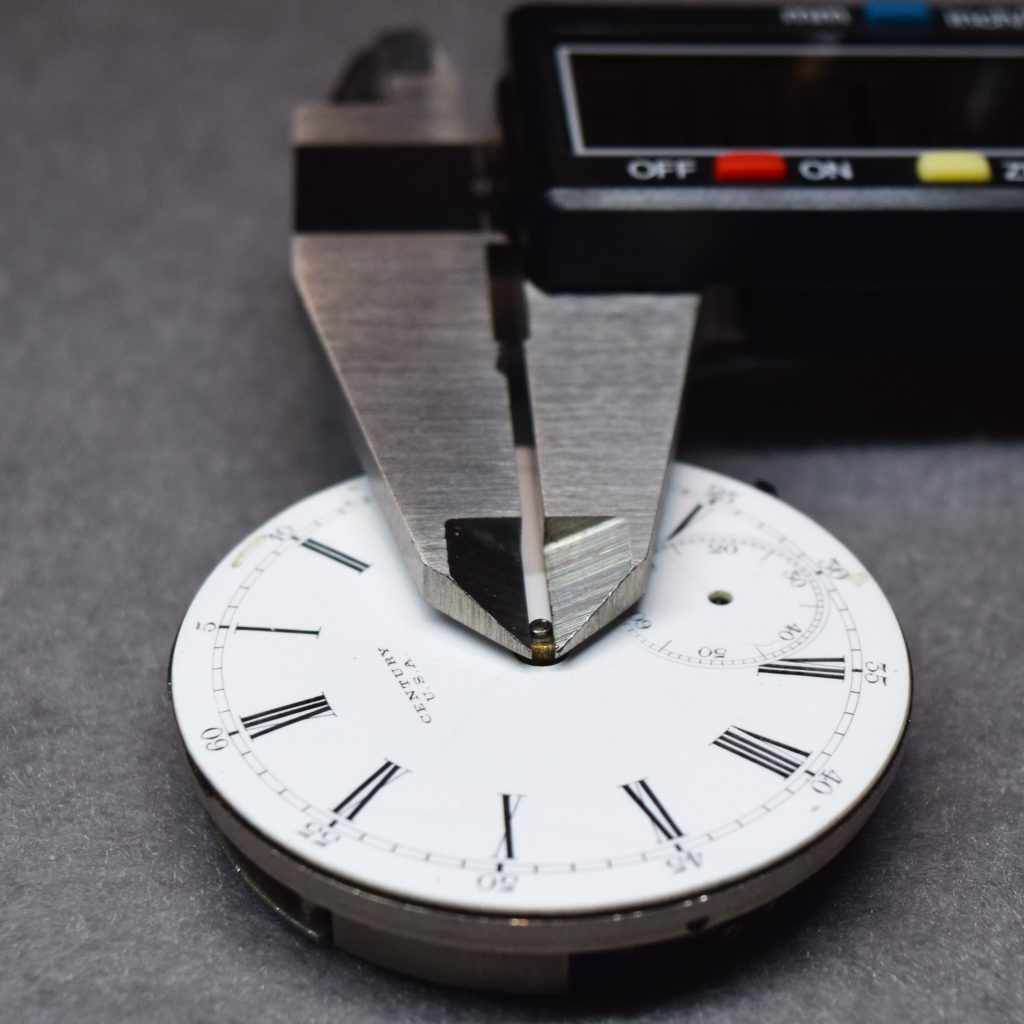
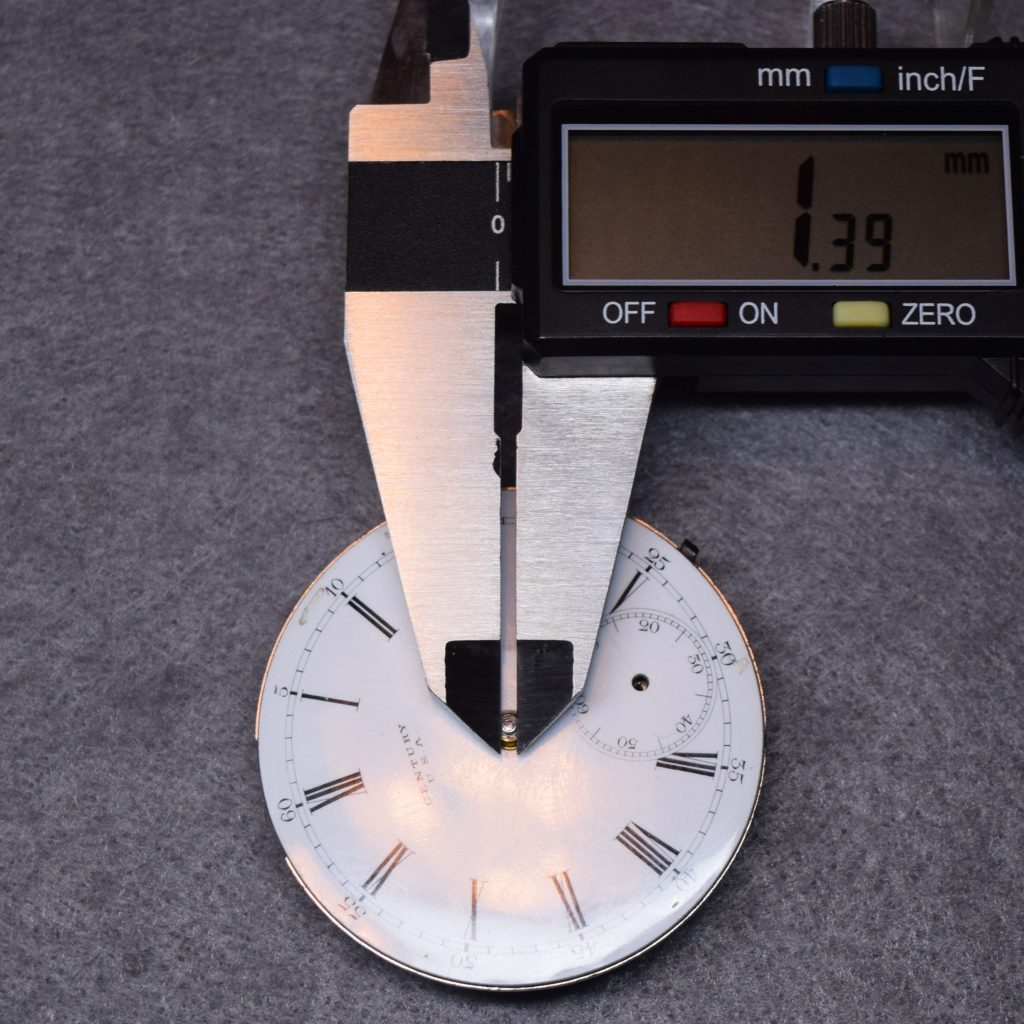

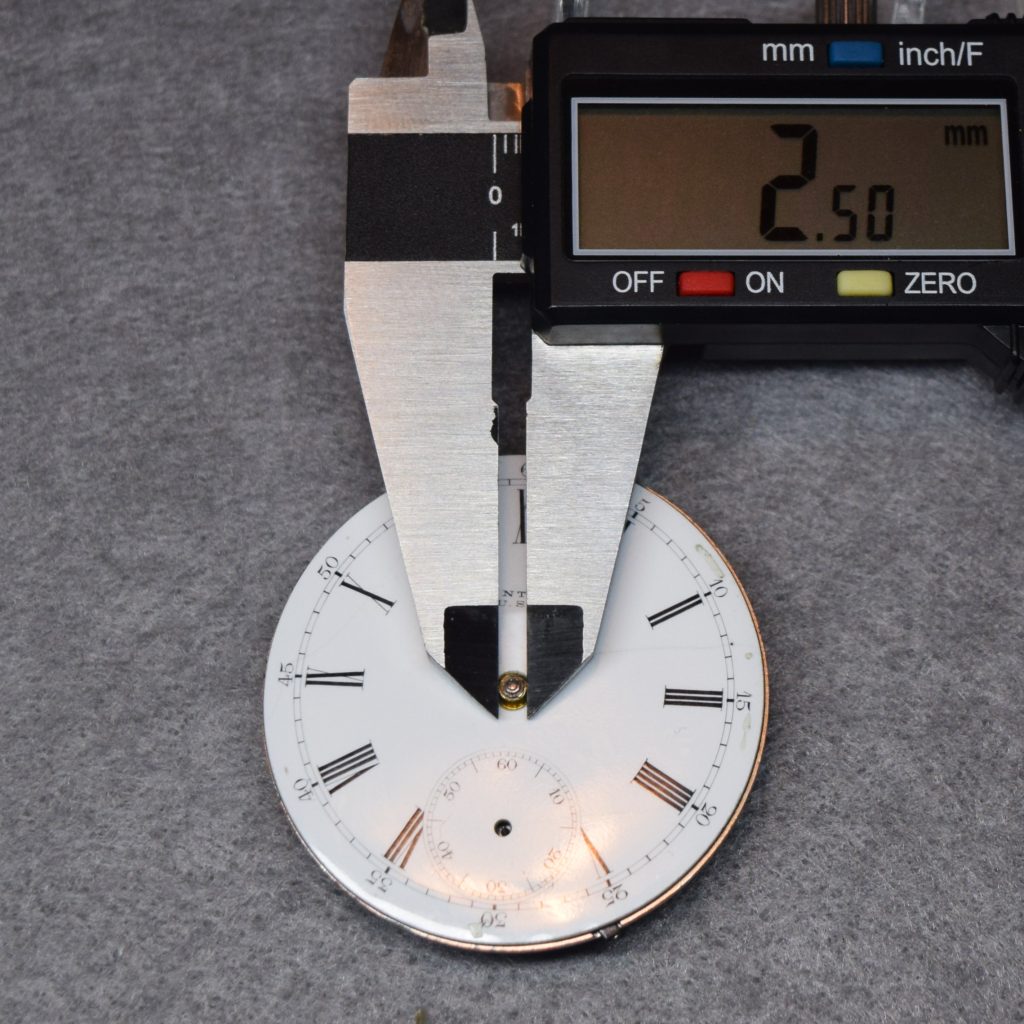
The top edge of this watch hand gauge is used to measure the length of a watch hand in millimeters, and the needles are used to measure the inside diameter of the hand’s mounting hole in hundredths of a millimeter.
The length of the minute hand for this 18-size Seth Thomas pocket watch measures approximately 18 mm. The inside diameter of the mounting hole measures somewhere between 1.35 and 1.40 millimeters.
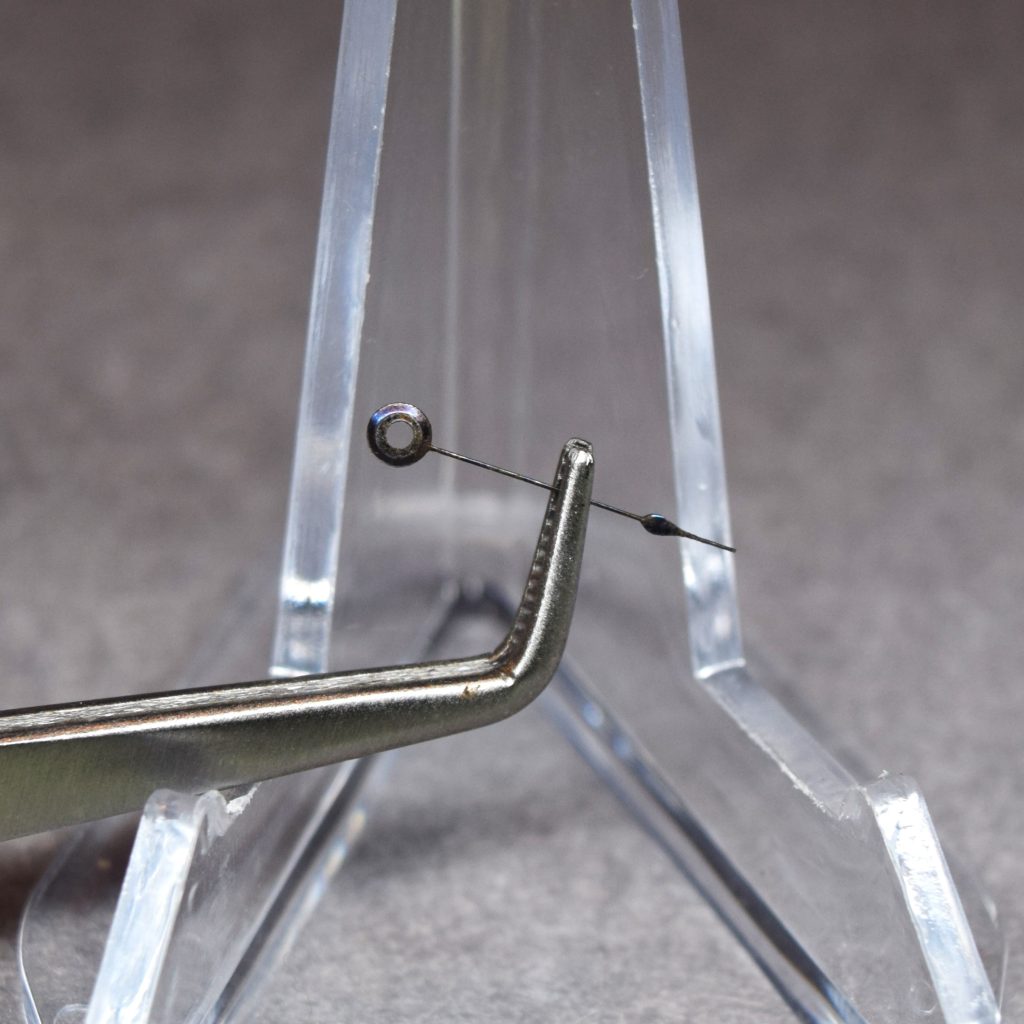
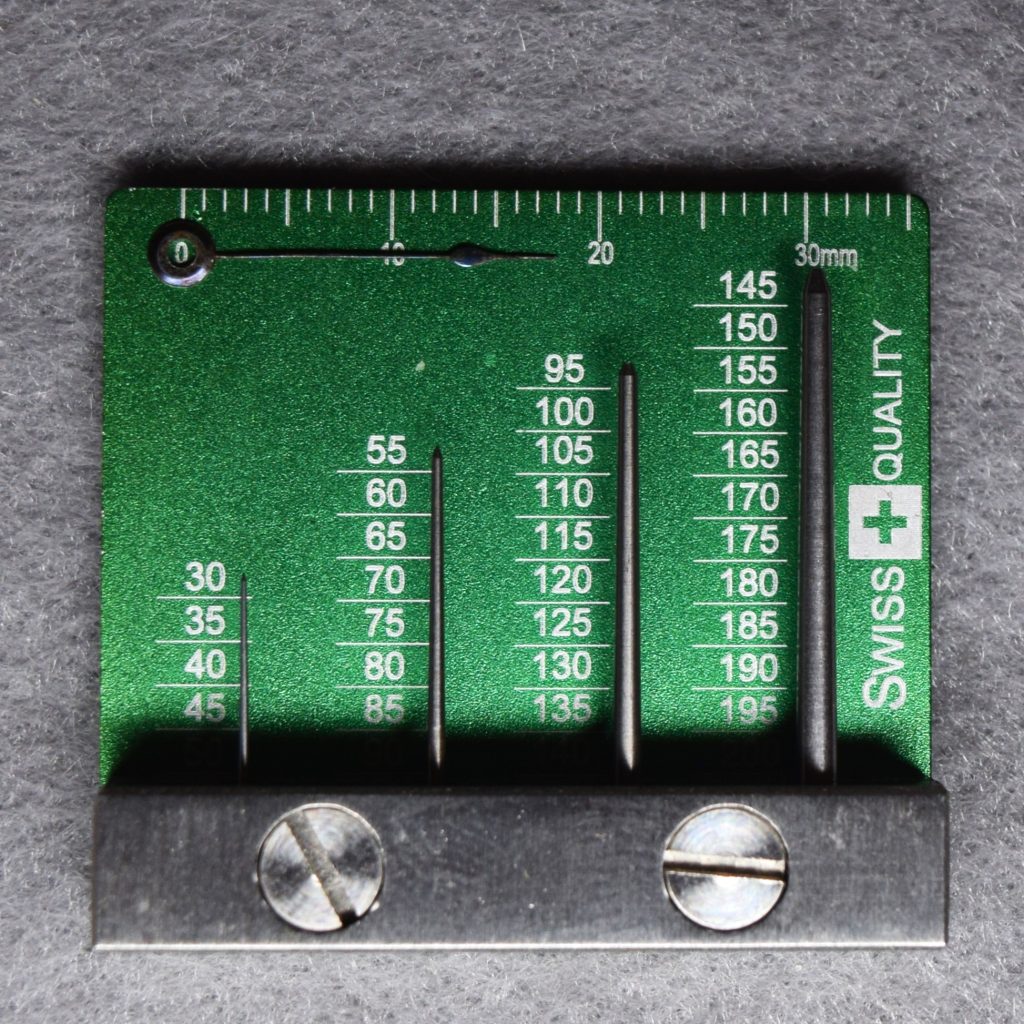
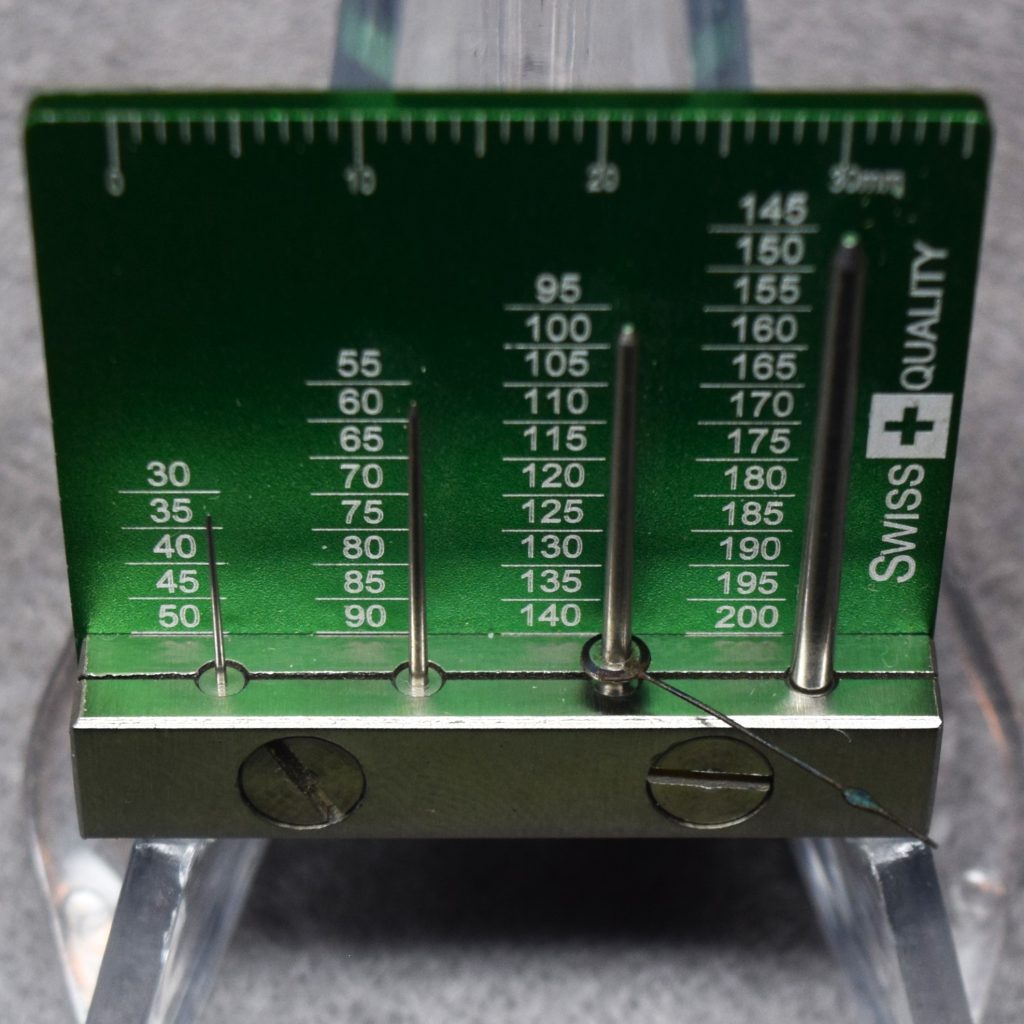
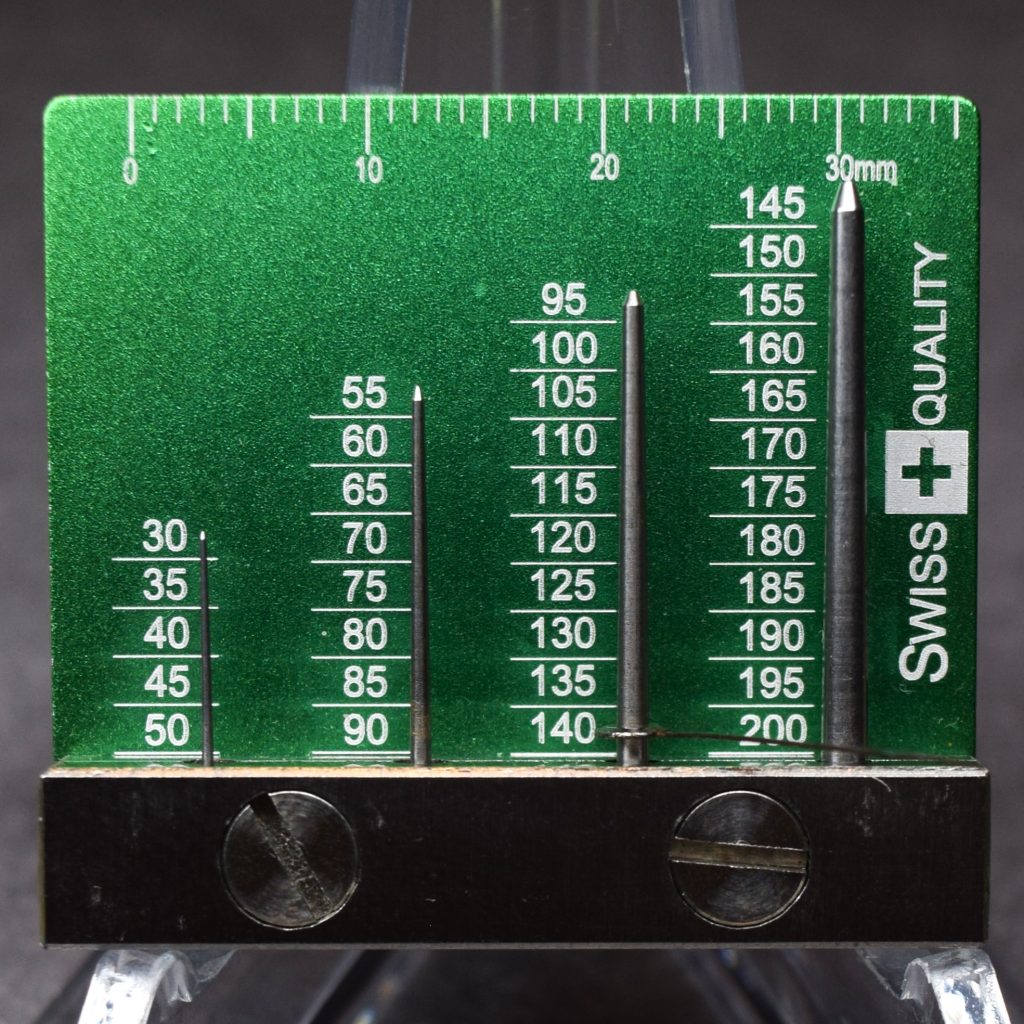
The length of the hour hand measures approximately 13mm. The inside diameter of the mounting hole measures 2.48 millimeters which is too large to be measured with the hand gauge, so a digital caliper was used.
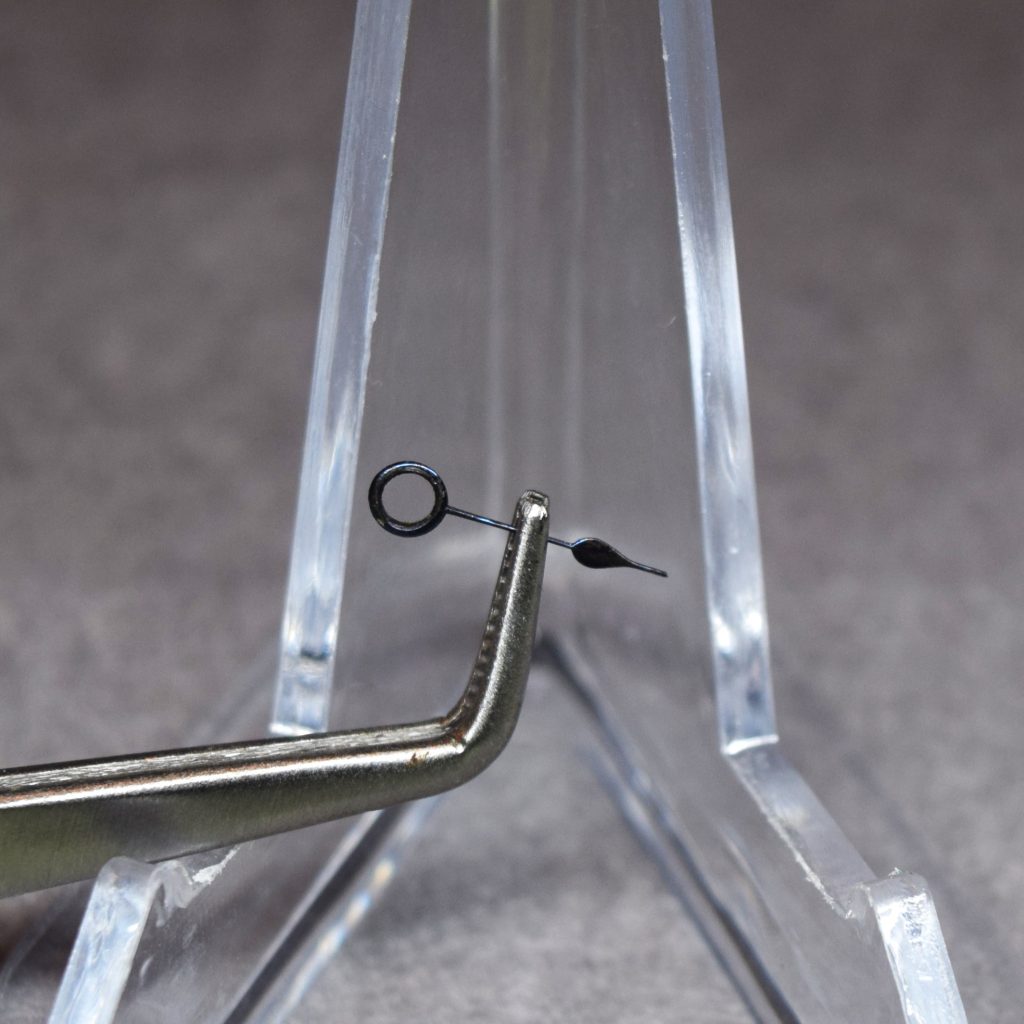

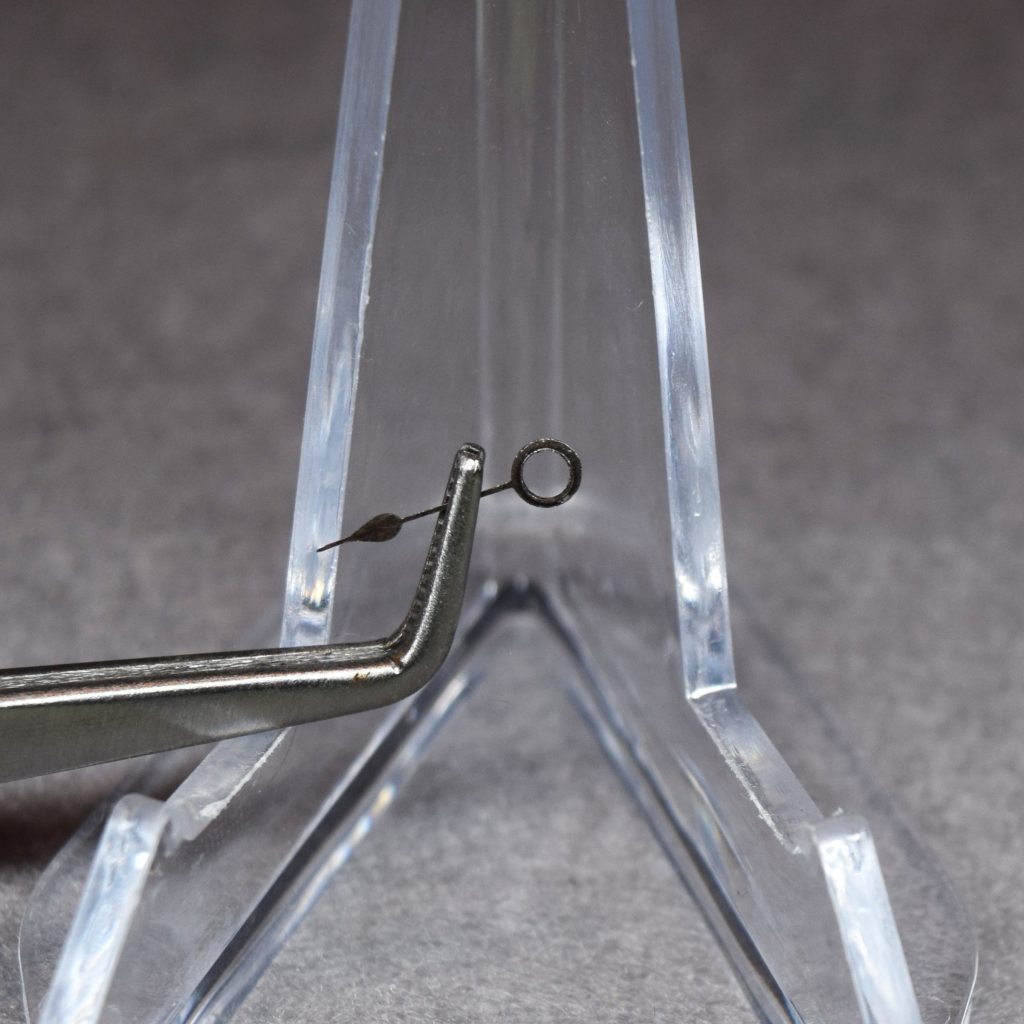
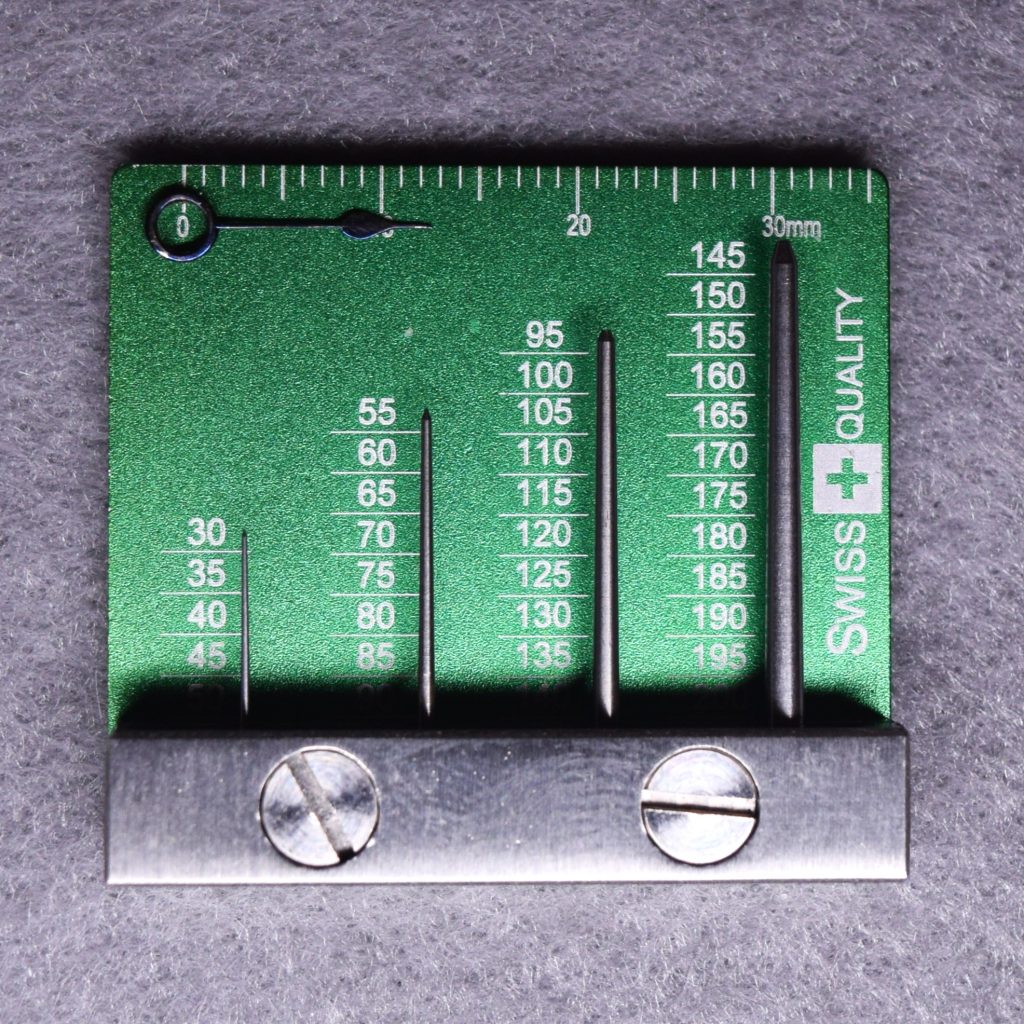
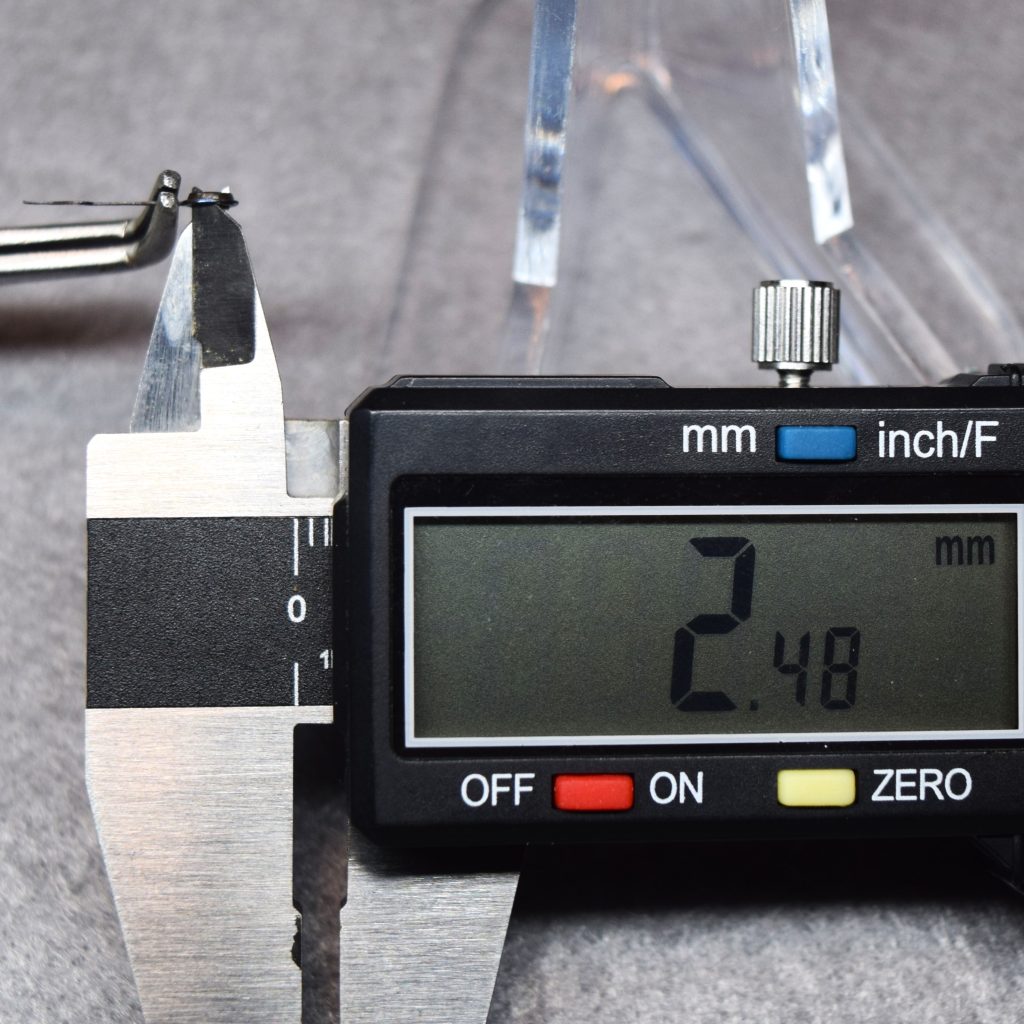
The inside diameter on 6-size hands measure: hour hand/1.45mm and minute hand/0.86mm.
The inside diameter on 12-size hands measure: hour hand/1.48mm and minute hand/0.90mm.
The inside diameter on 16-size hands measure: hour hand/1.85mm and minute hand/1.07mm.
Seth Thomas Pocket Watch Hand Chart
Seth Thomas pocket watch hands present clear, clean, highly functional and attractive lines that compliment the simple but elegant and practical dials with which Seth Thomas pocket watch movements were fitted.
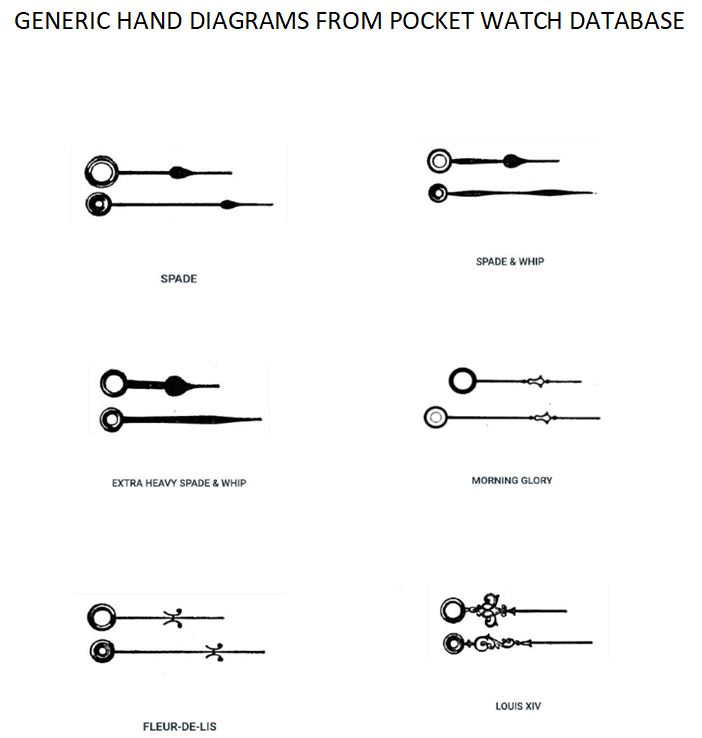
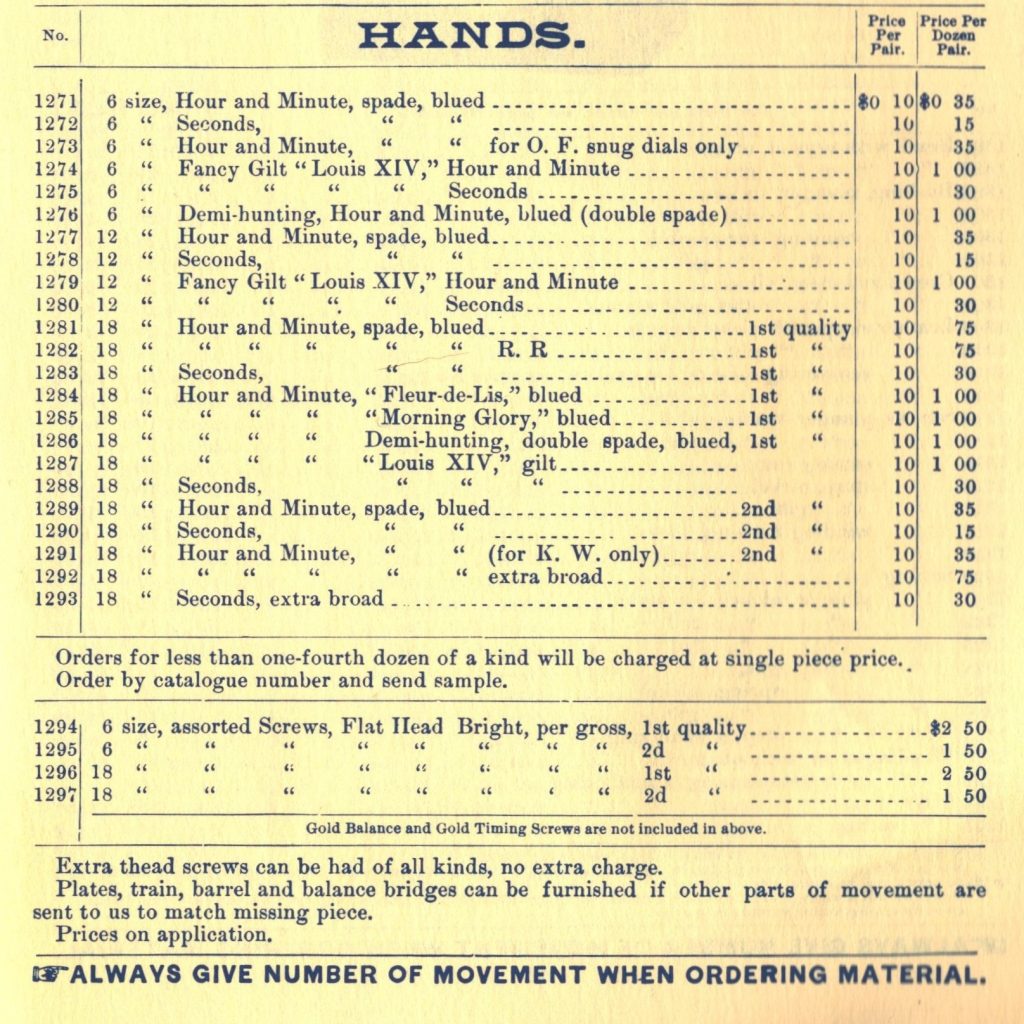
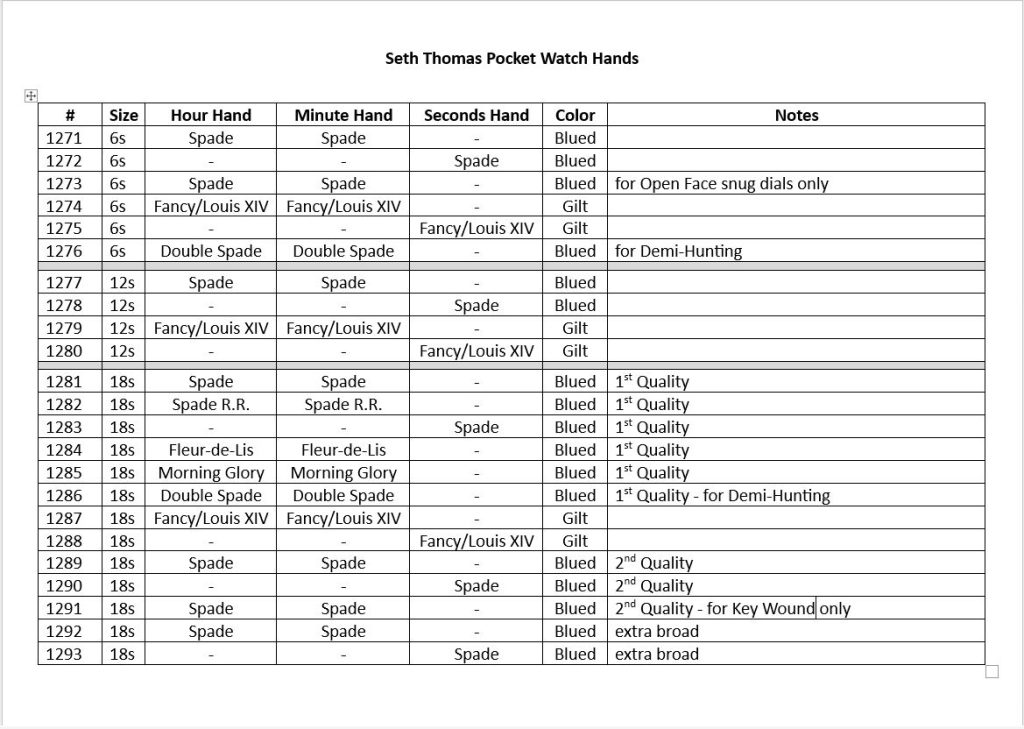
Seth Thomas Pocket Watch Hands Chart Illustrated

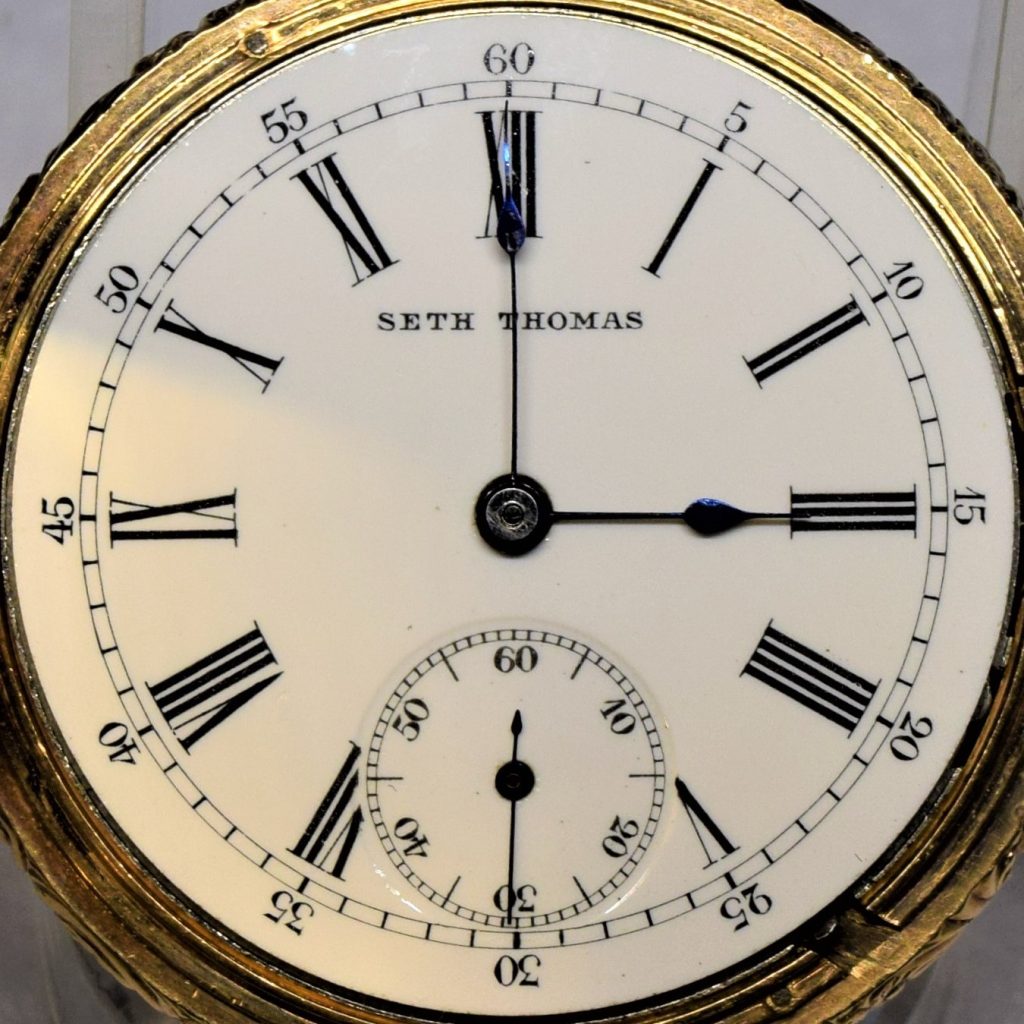
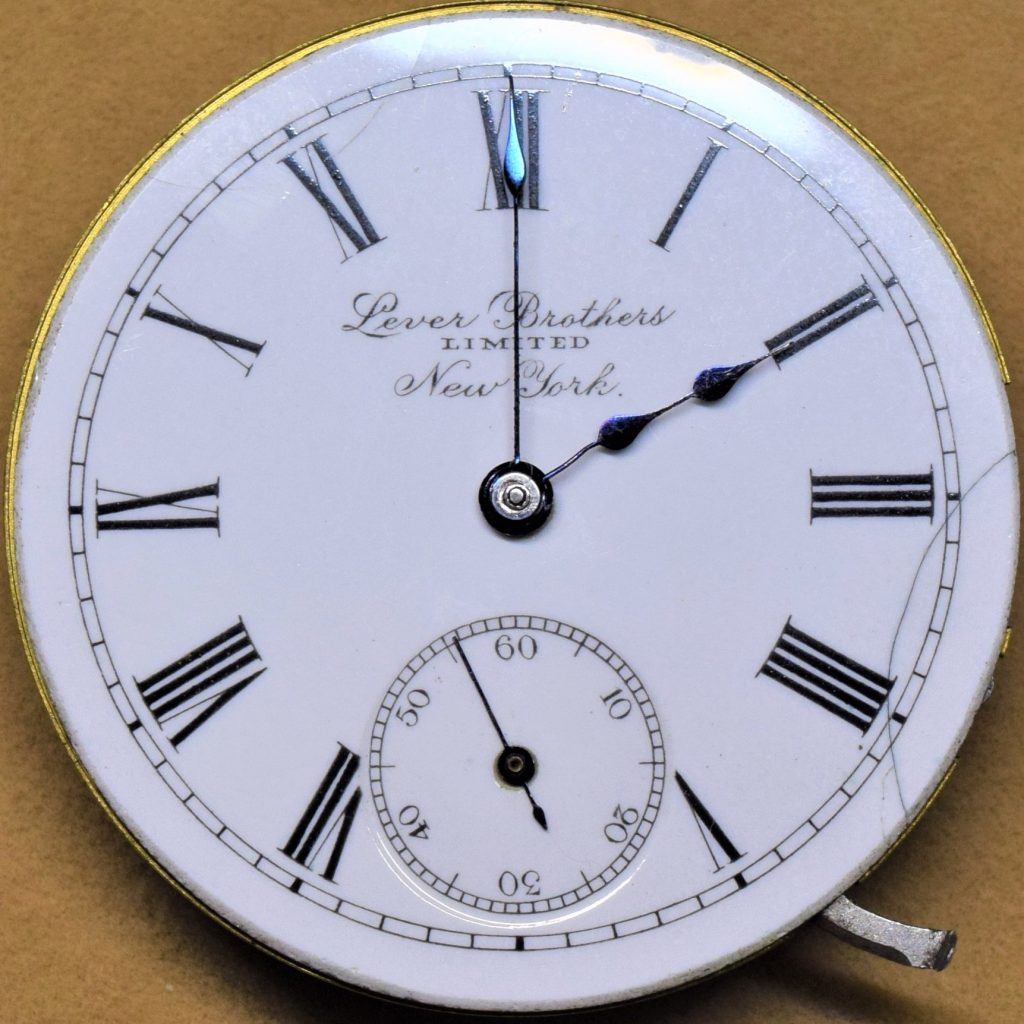
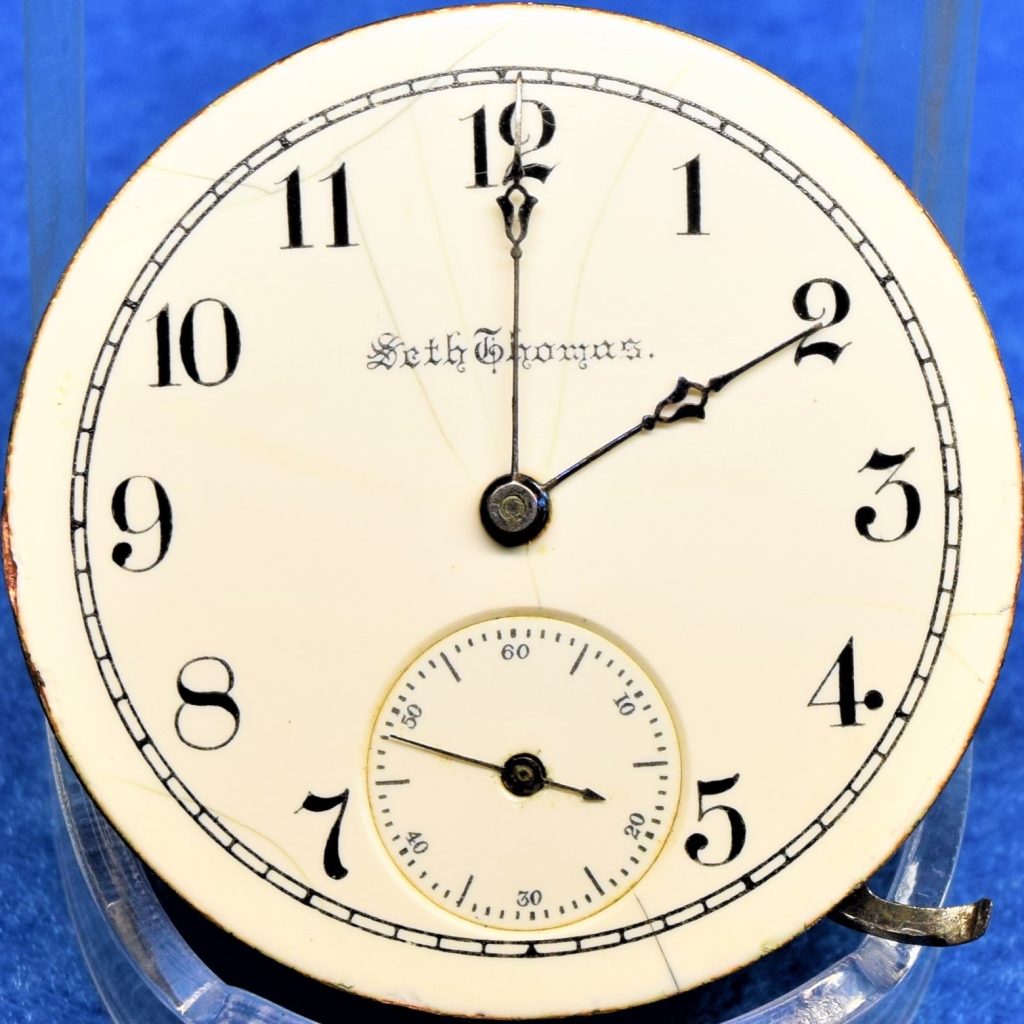


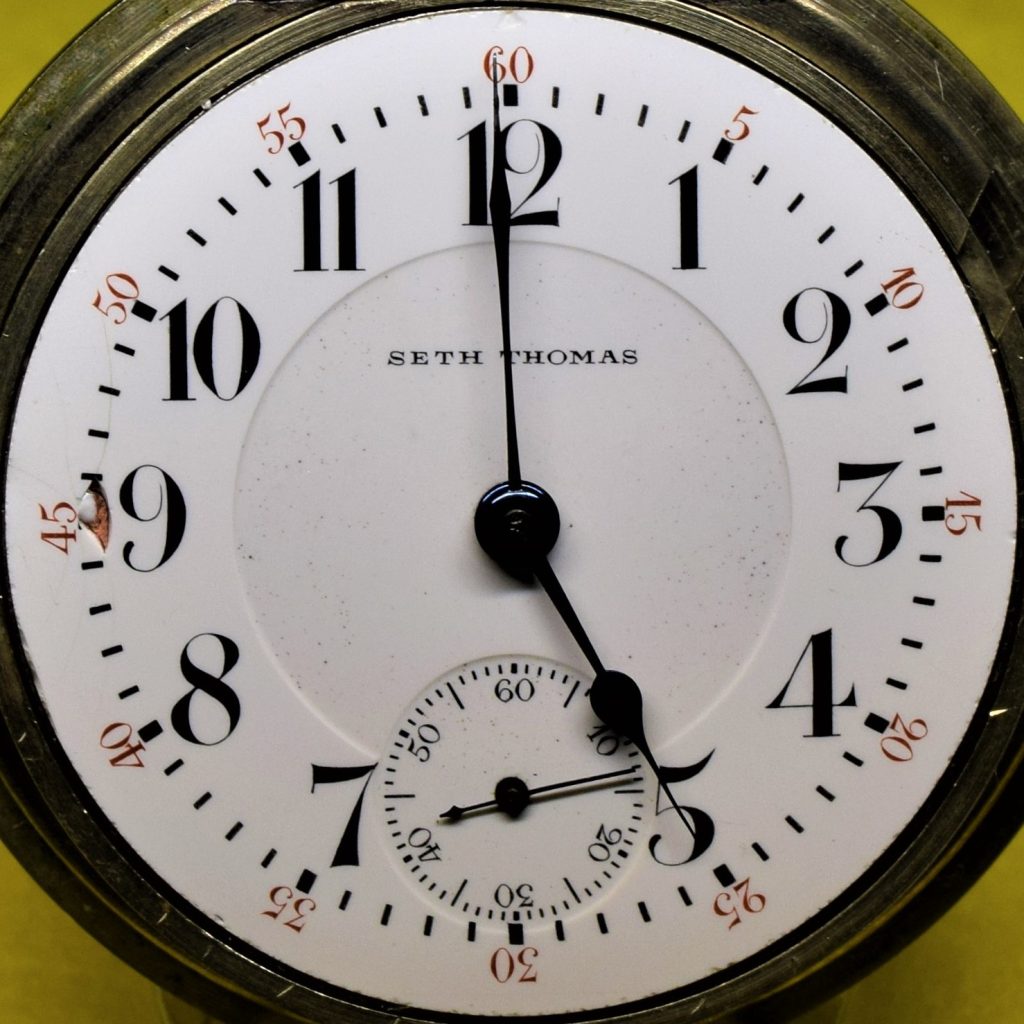


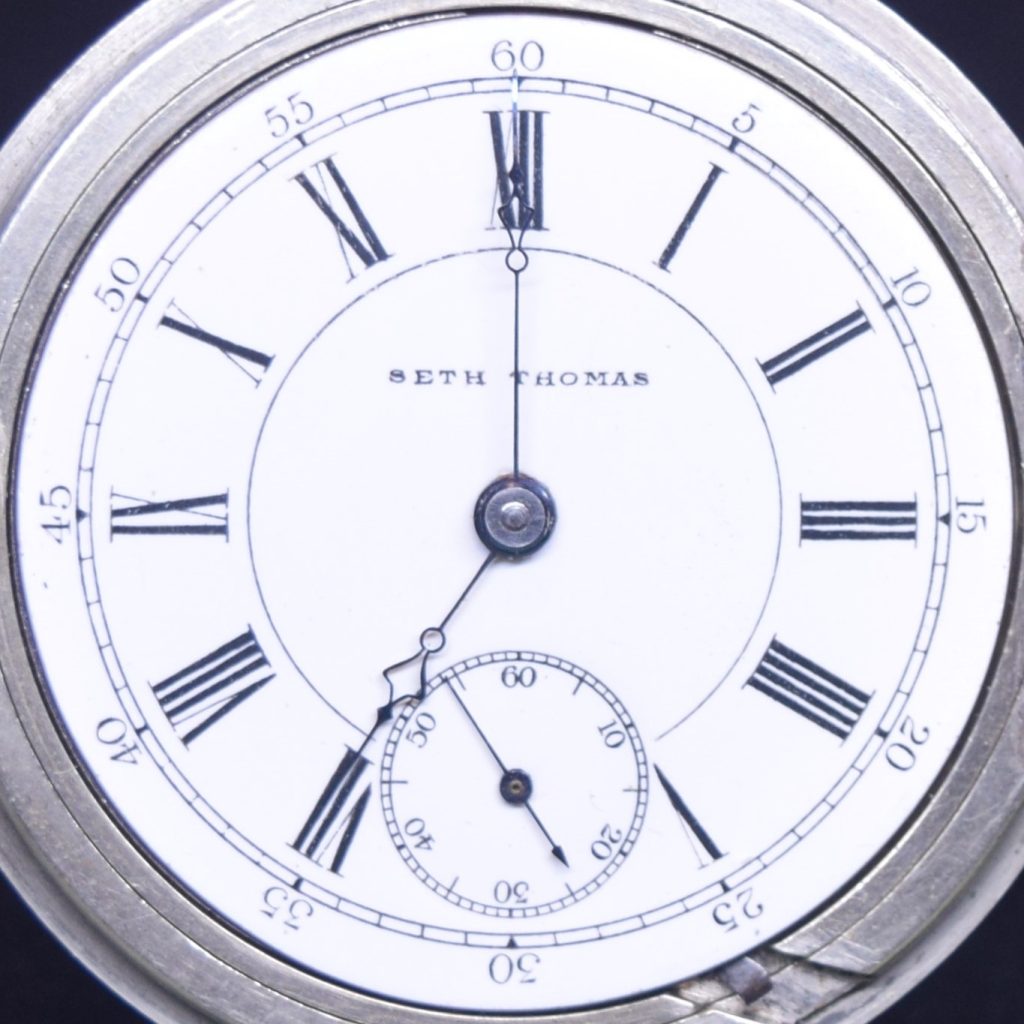

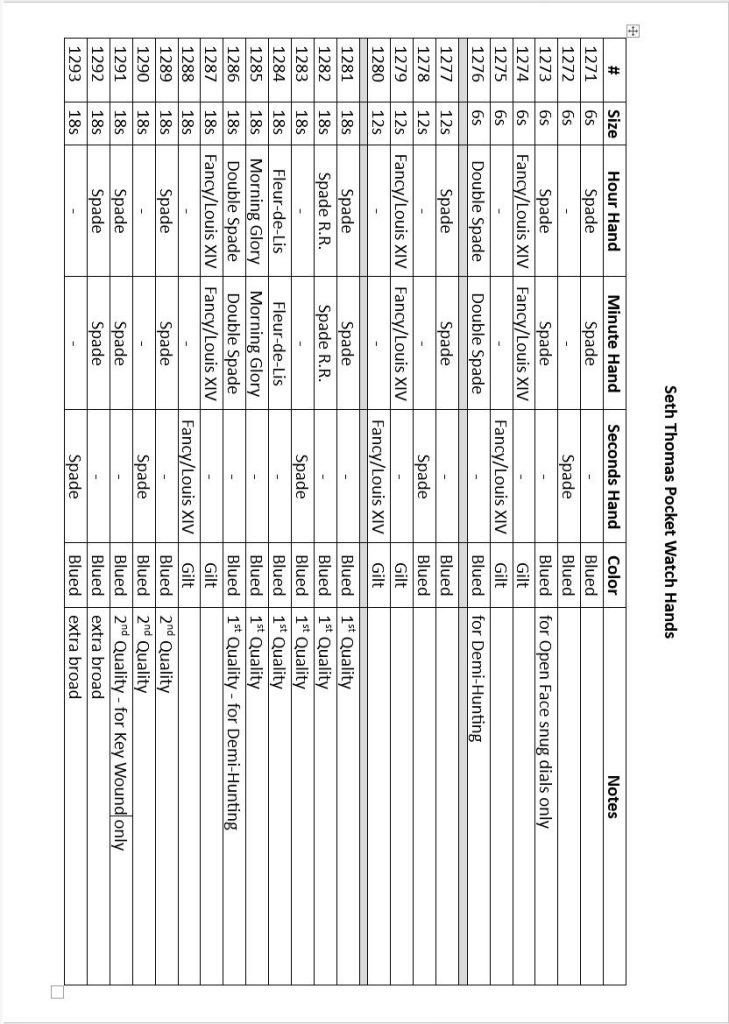

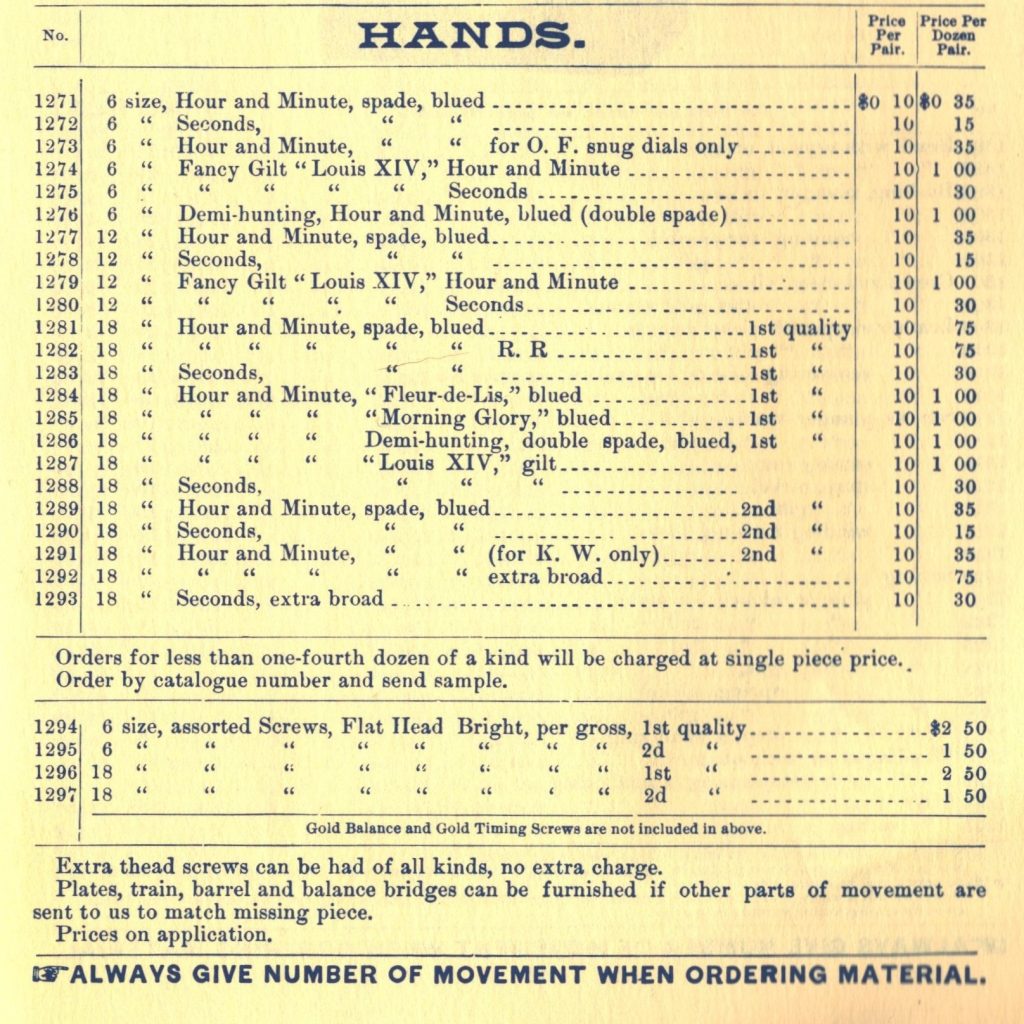

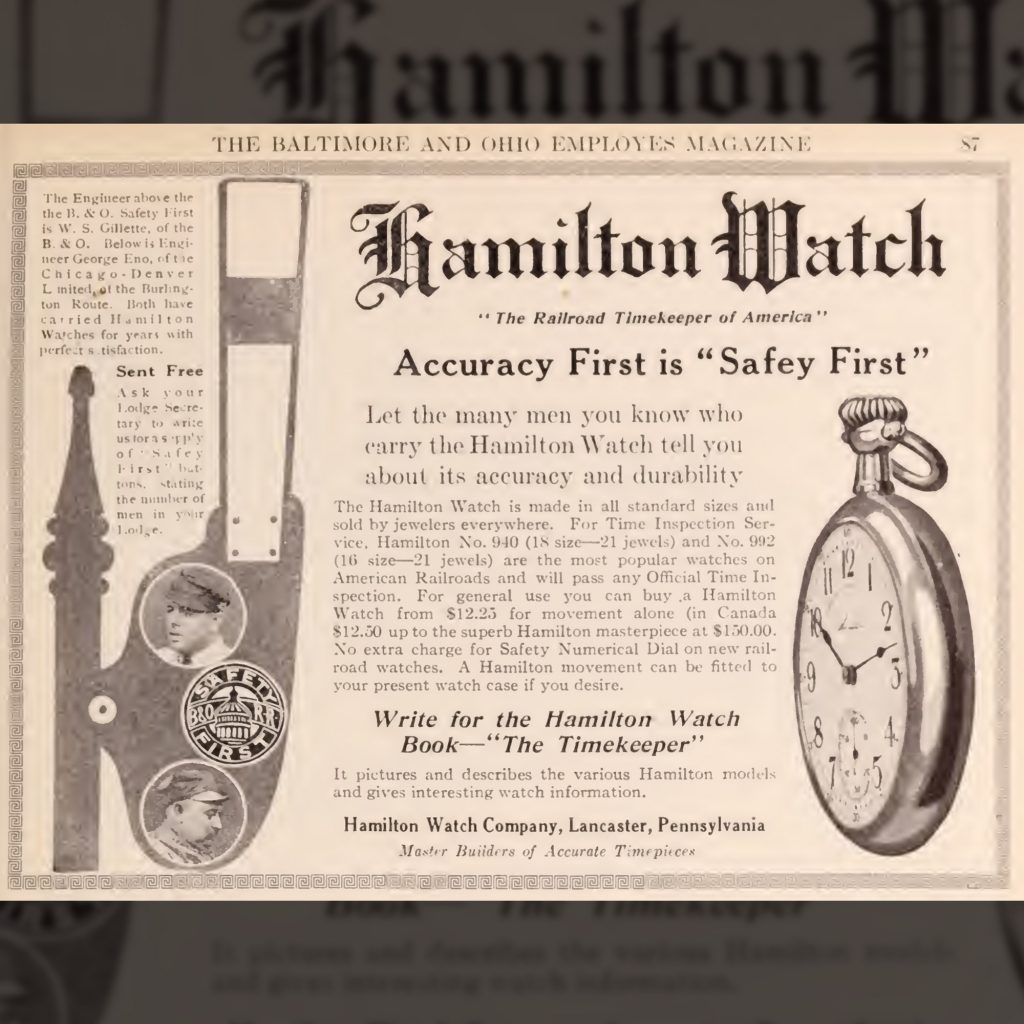
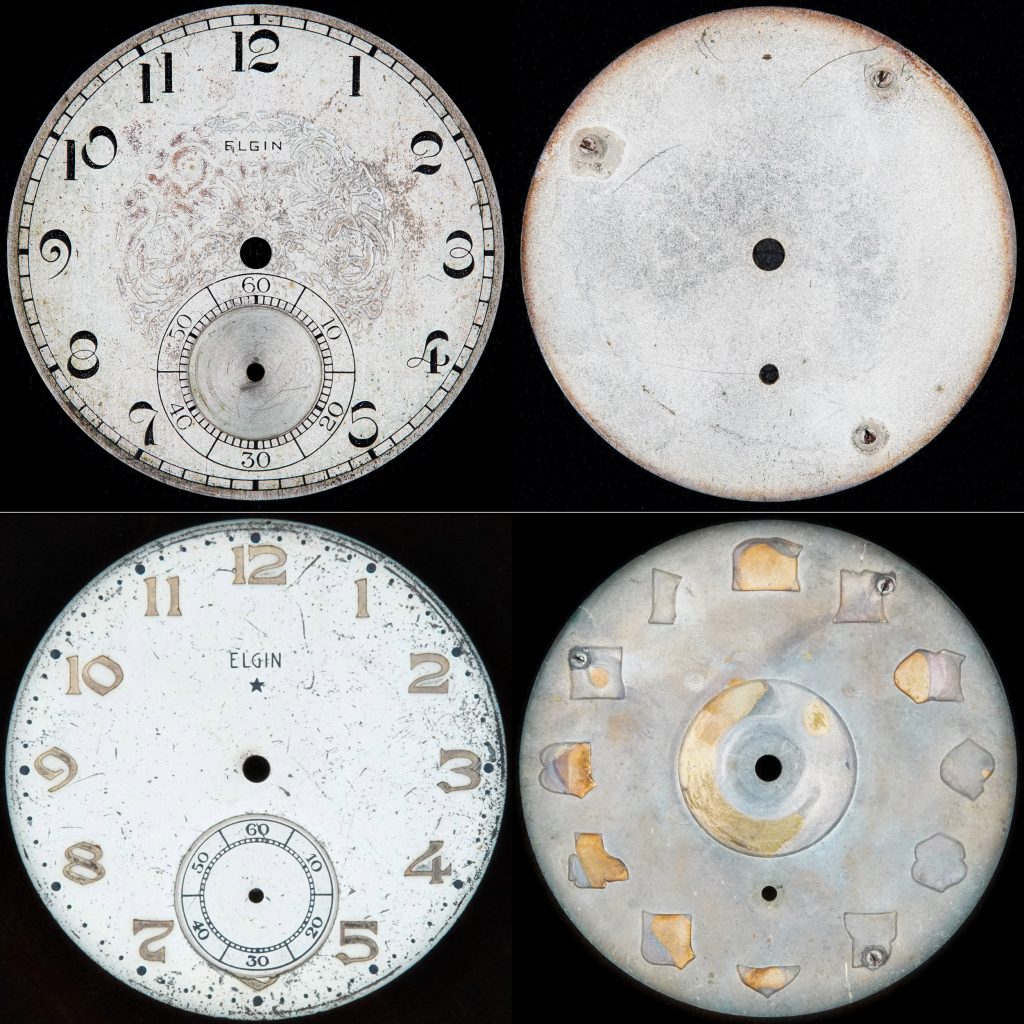
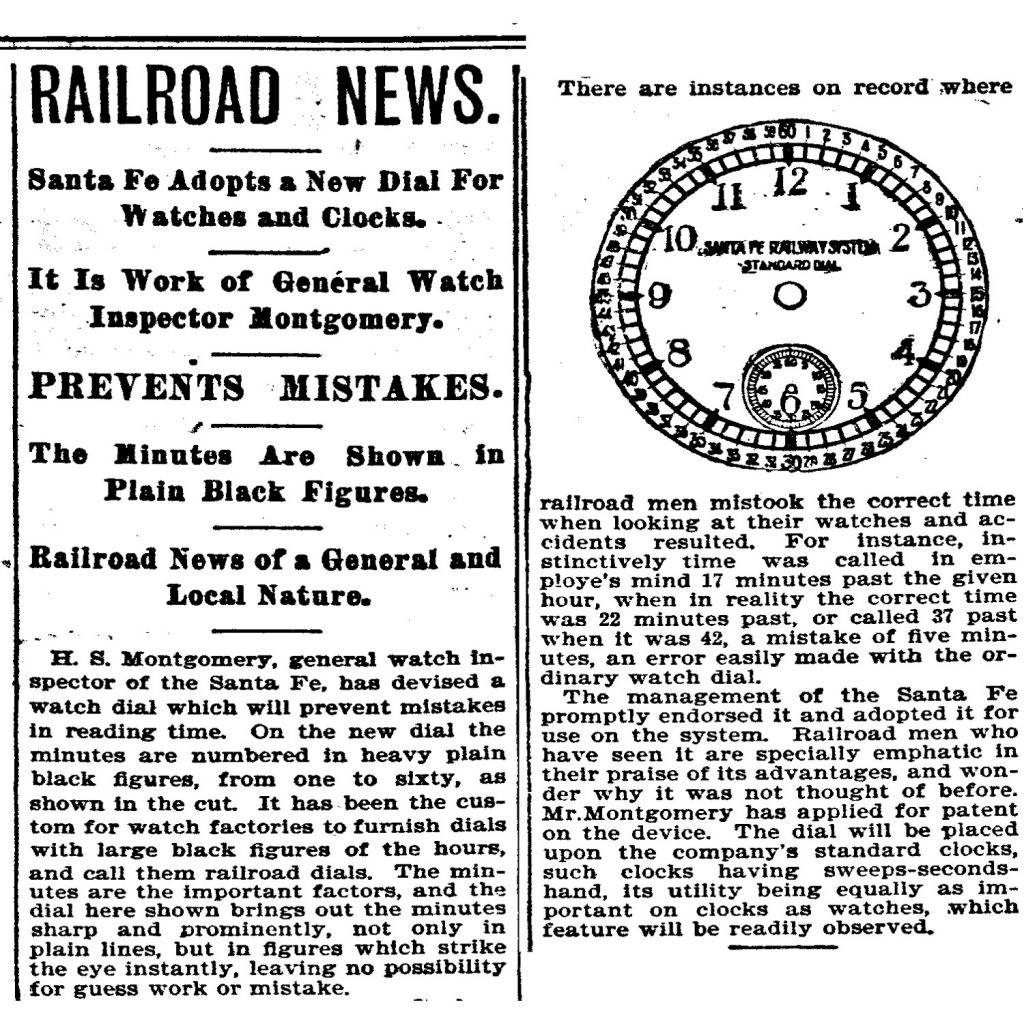
Wow! Very informative article! Thank you very much.
As we all share; we all move forward.
Thank you for reading!!
Sharing knowledge makes us all inspired to be more , freely passing it on keeps us growing to inspire others
That’s the spirit!!
Thank you!!
Thanks so much for the insight on Seth Thomas hands! Quite of a variety of them to see.
Thank you for reading!!
I can only hope that others will pick this work up and expand upon it. There’s so much more of the Seth Thomas story to hear about.